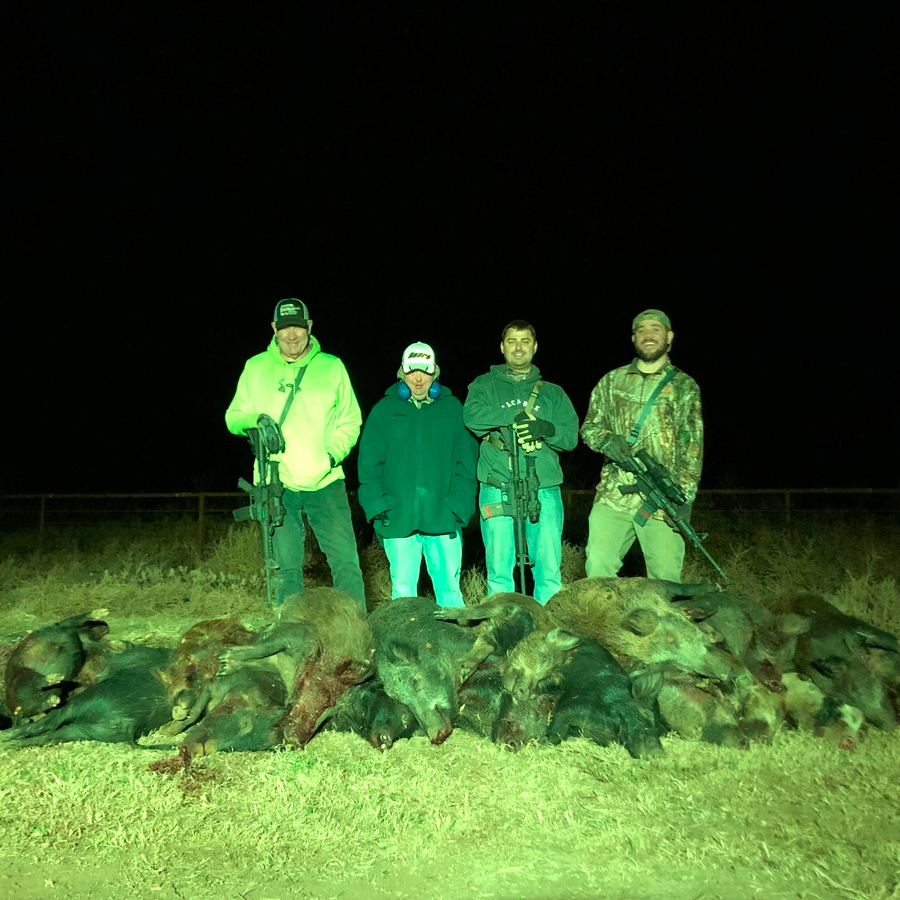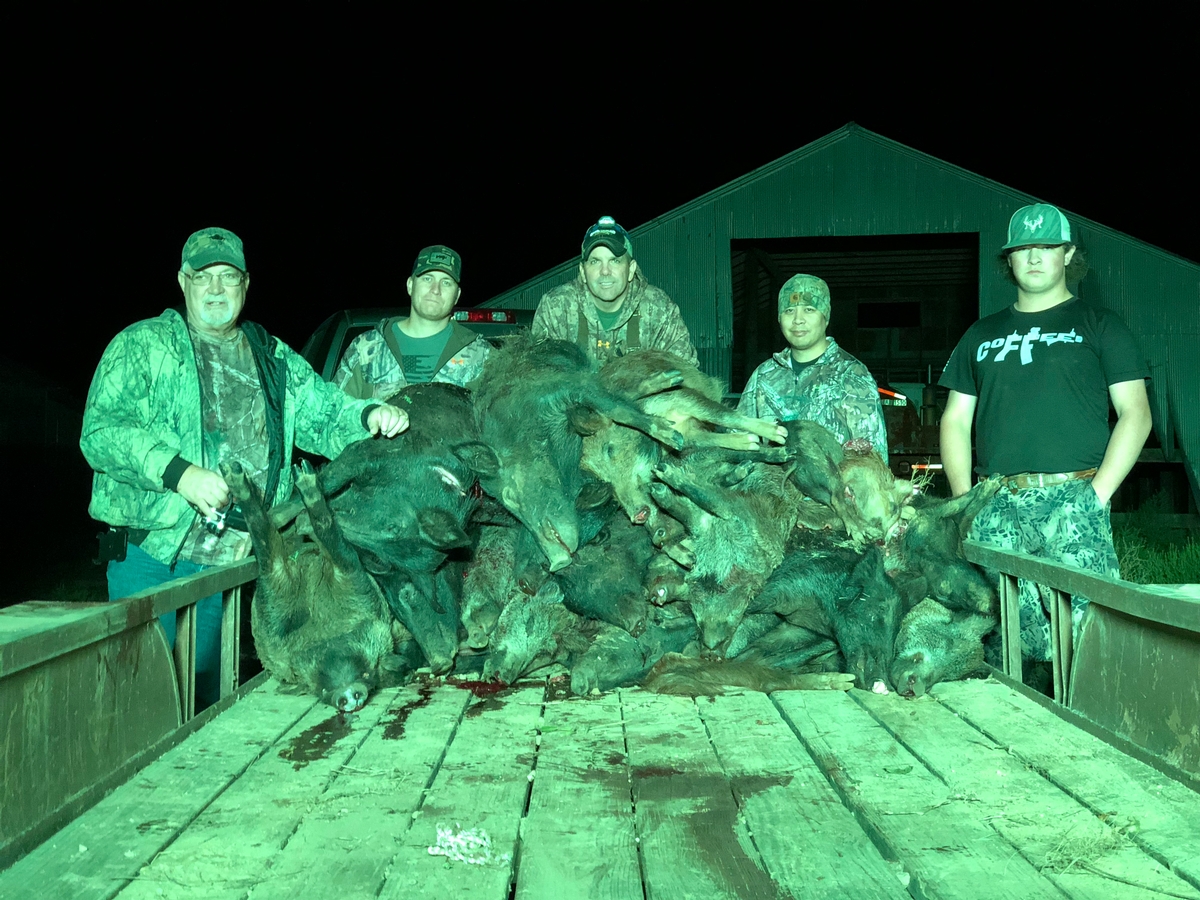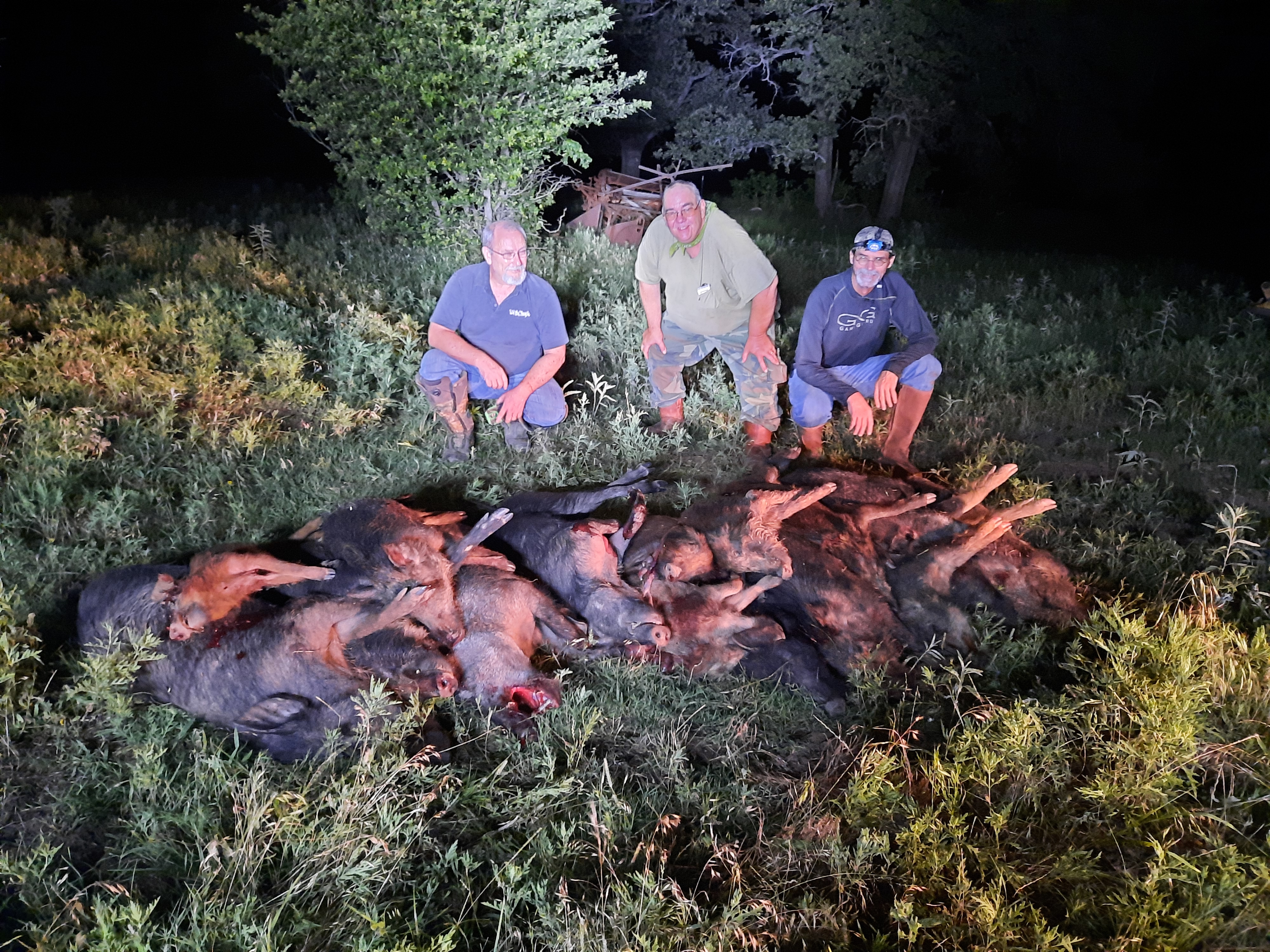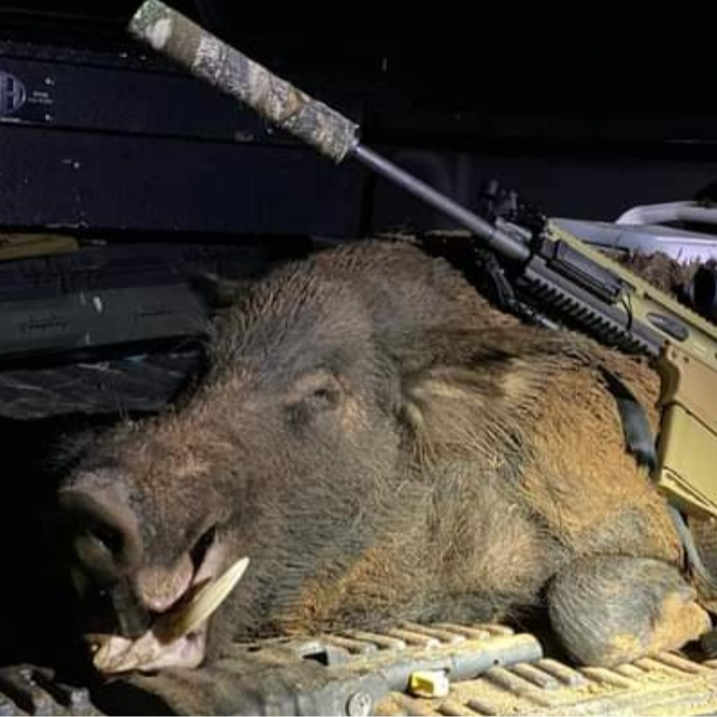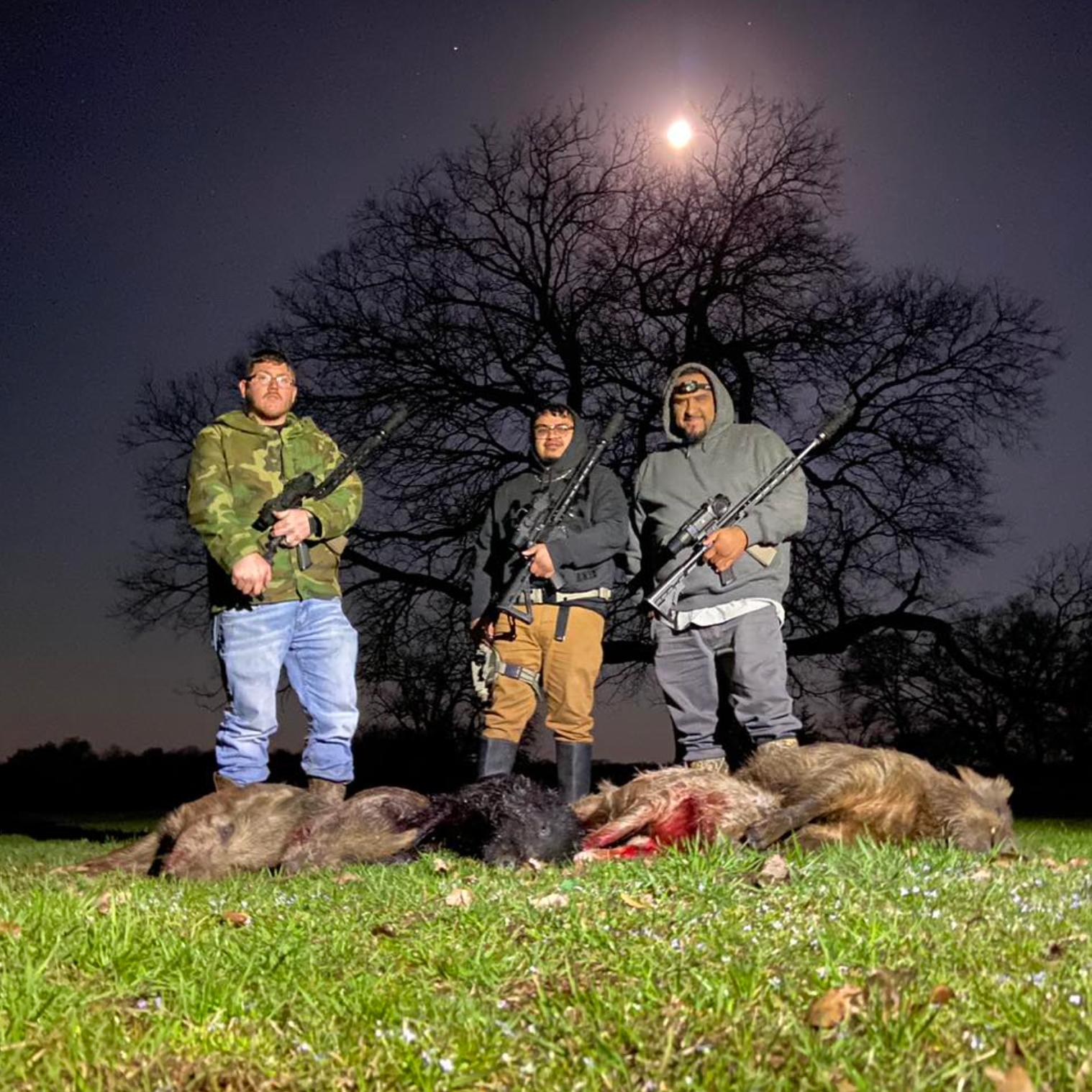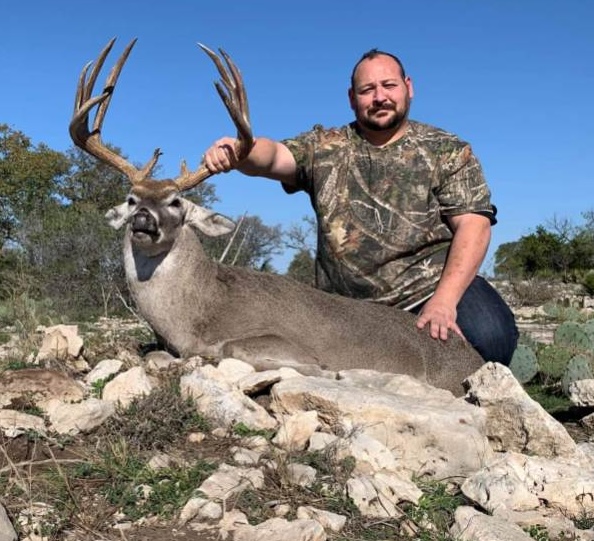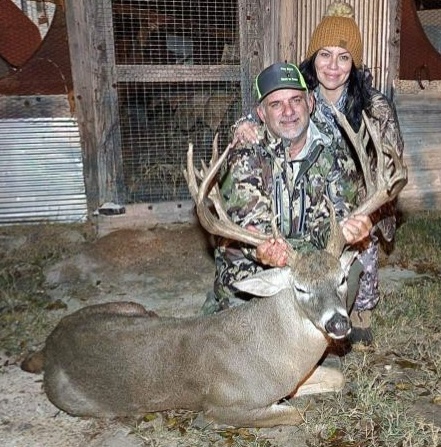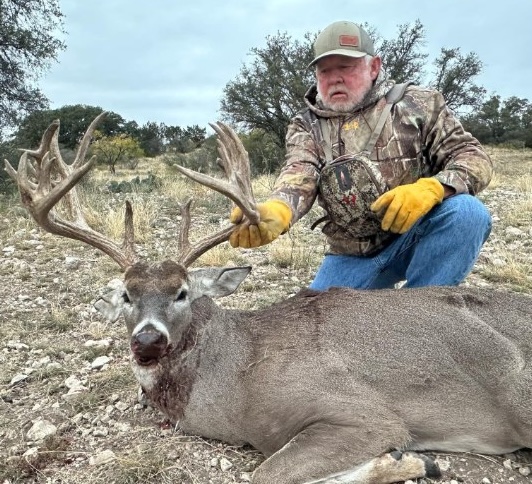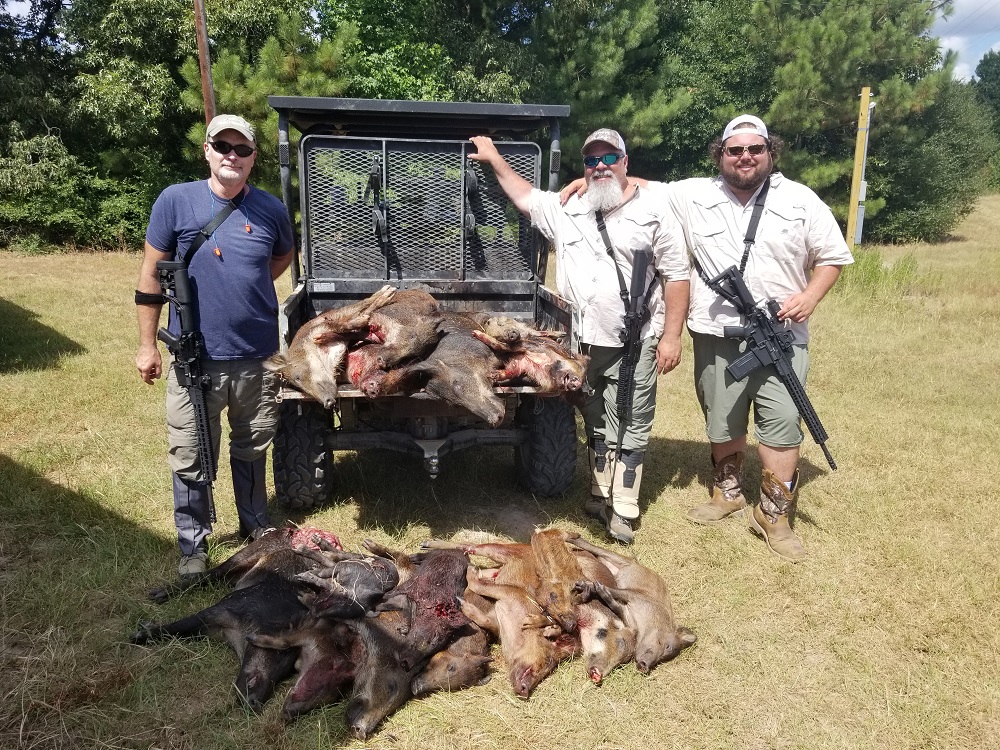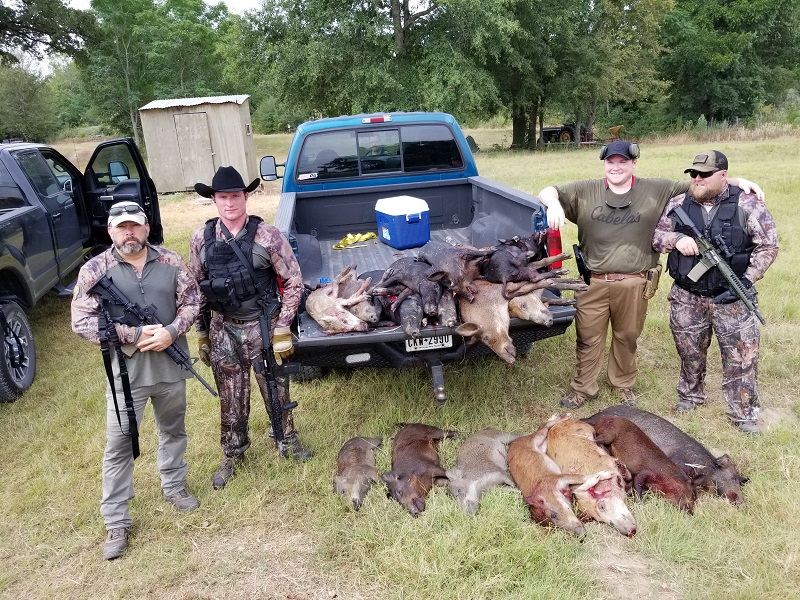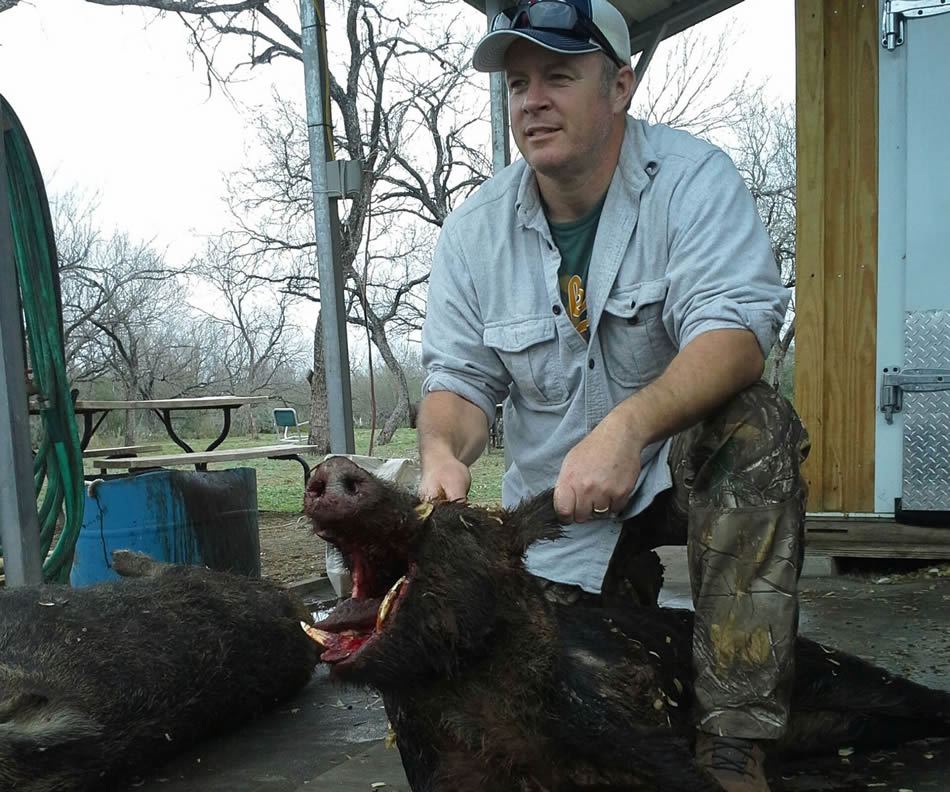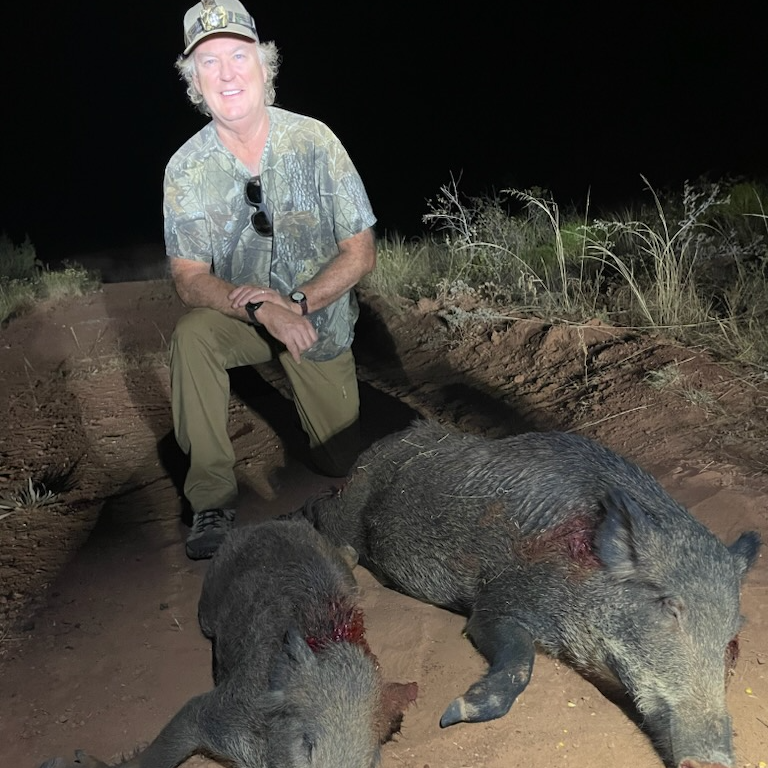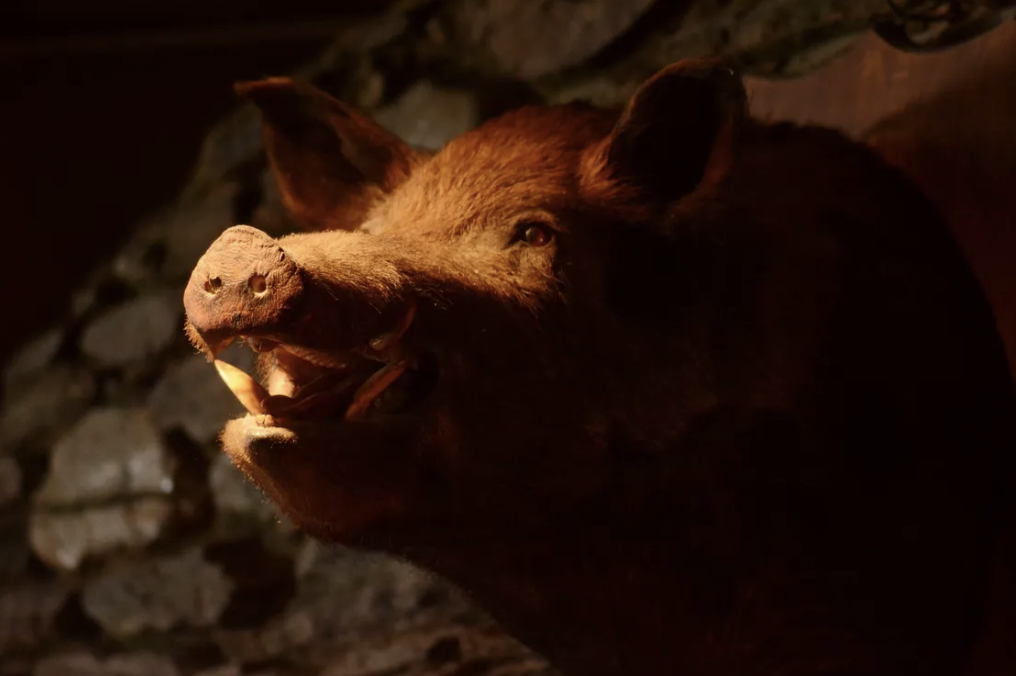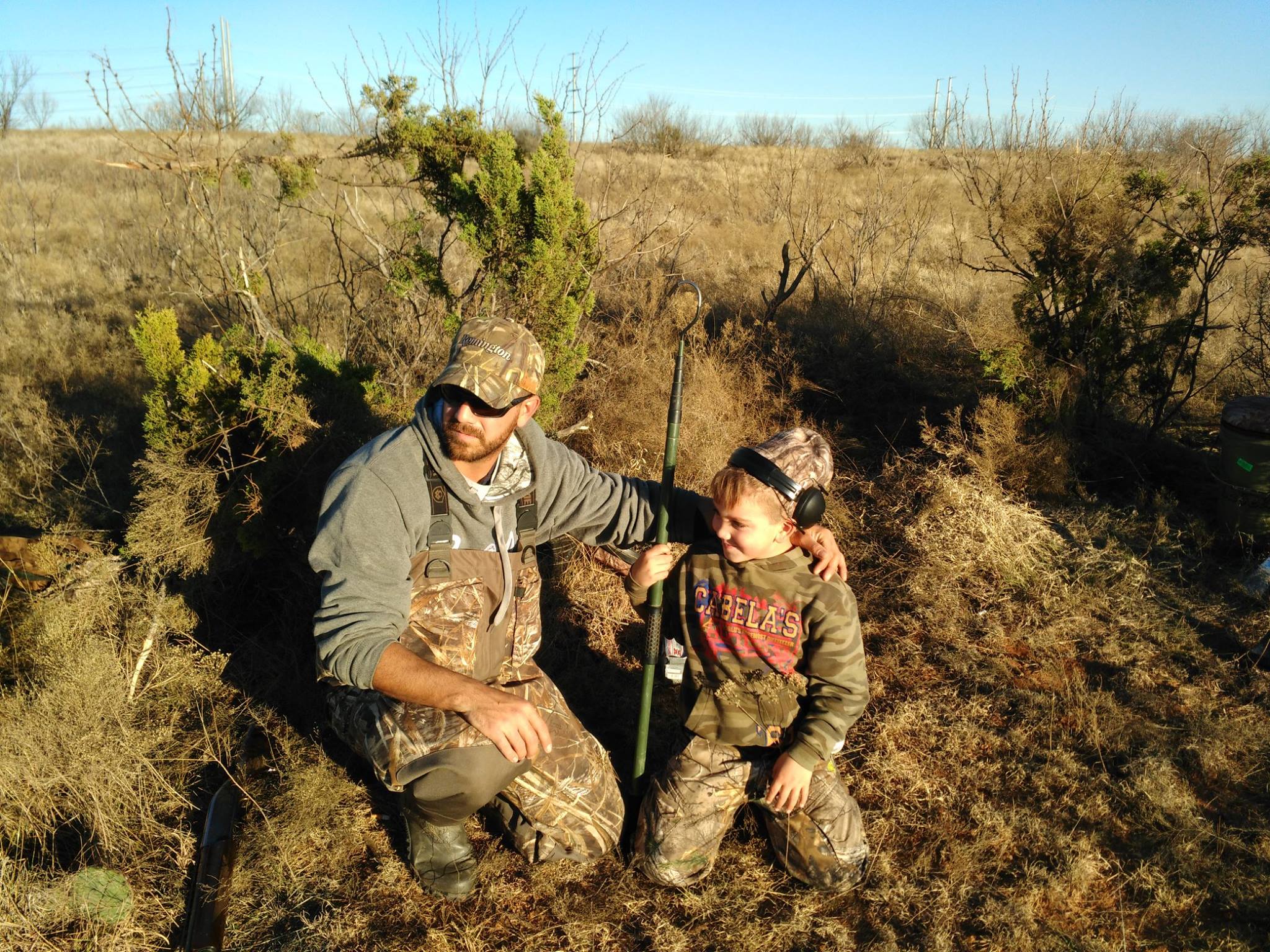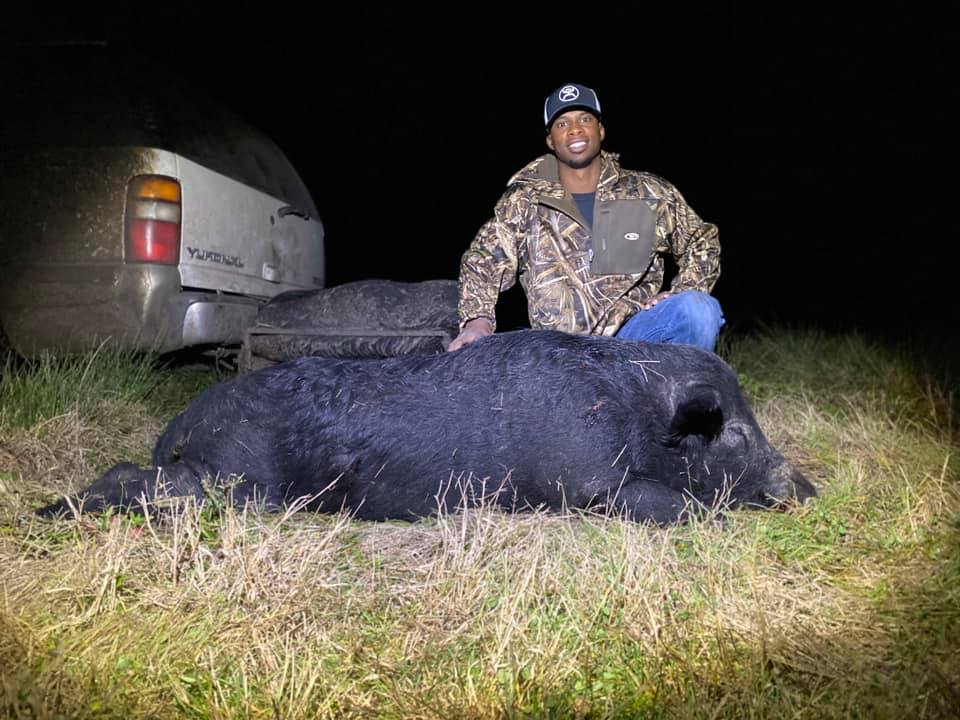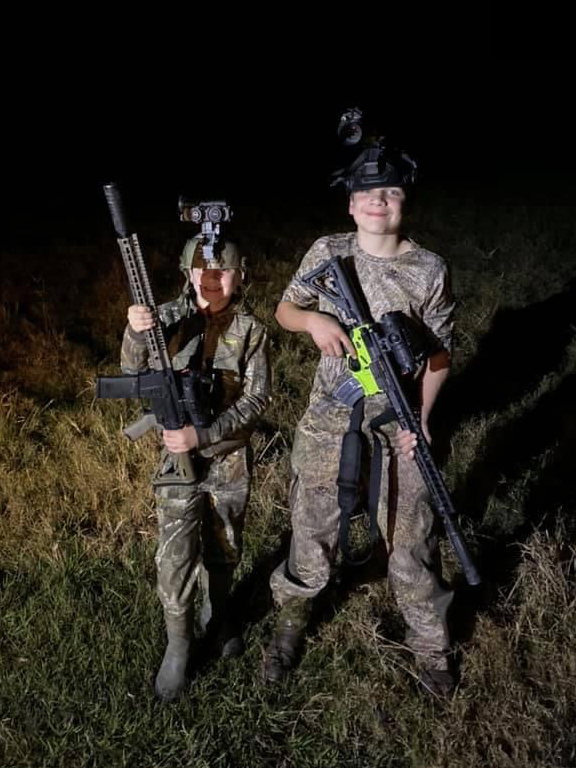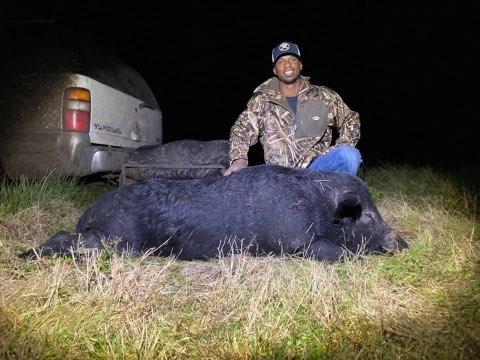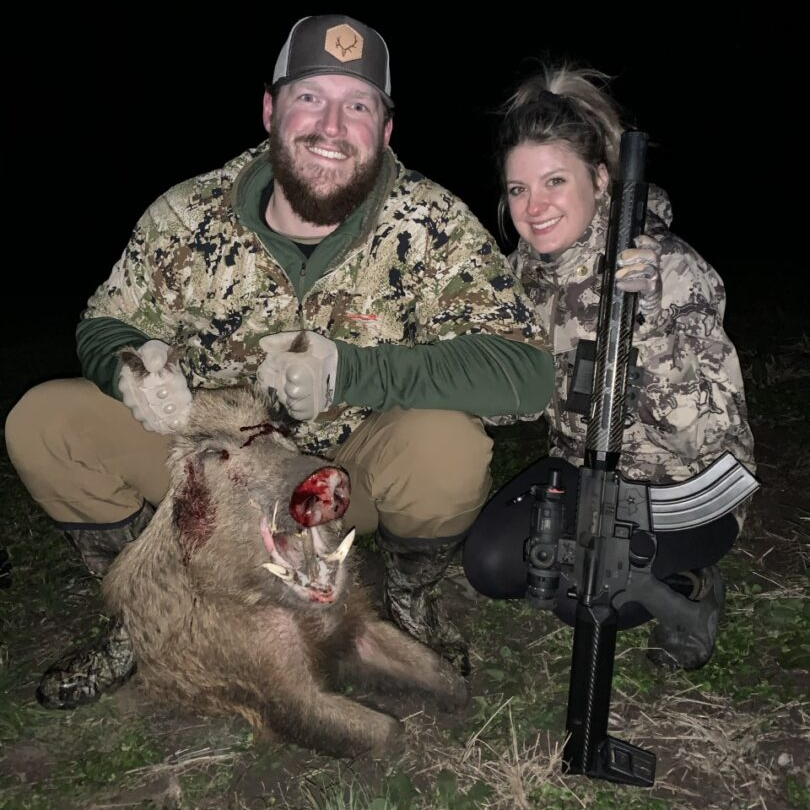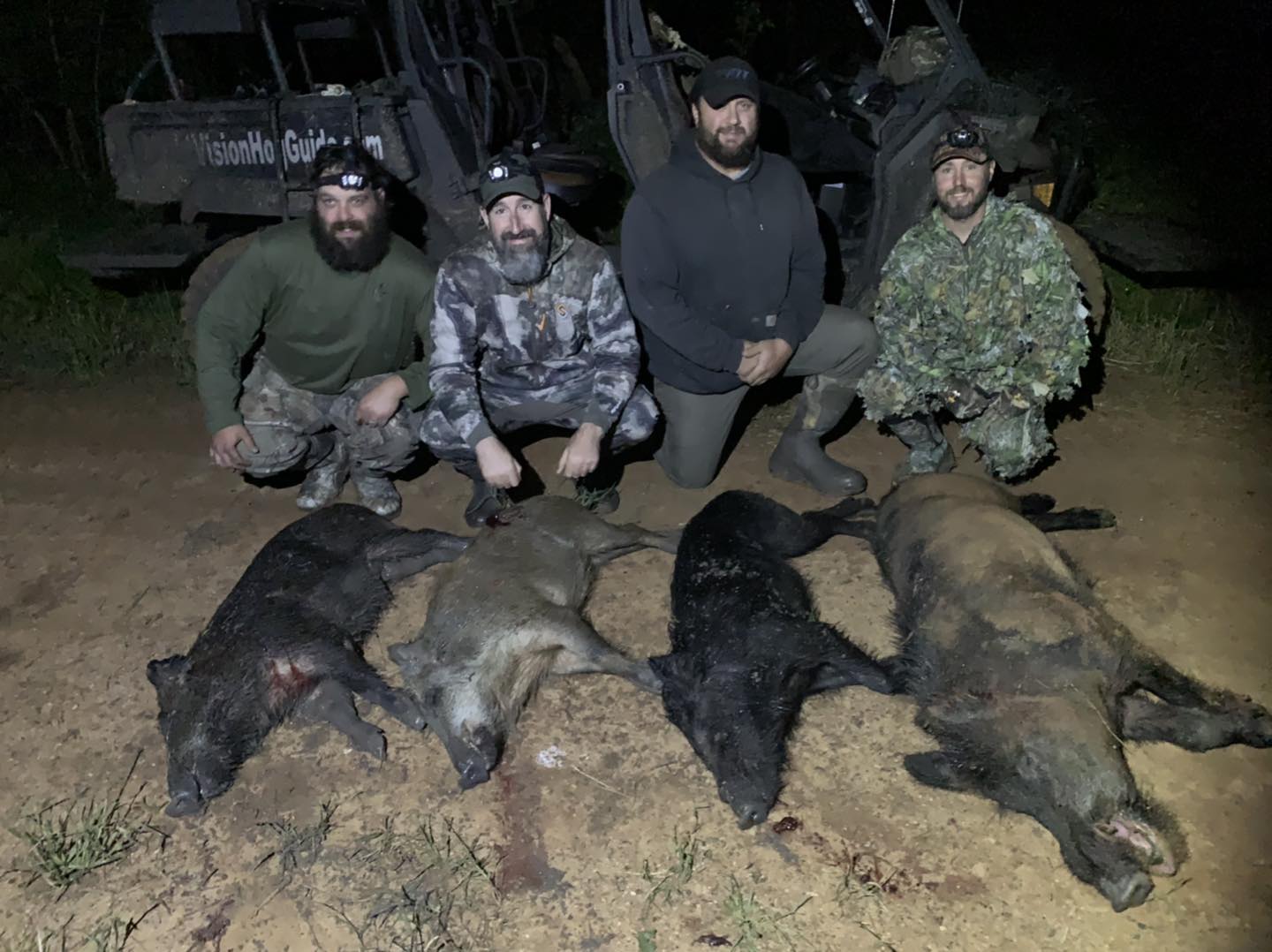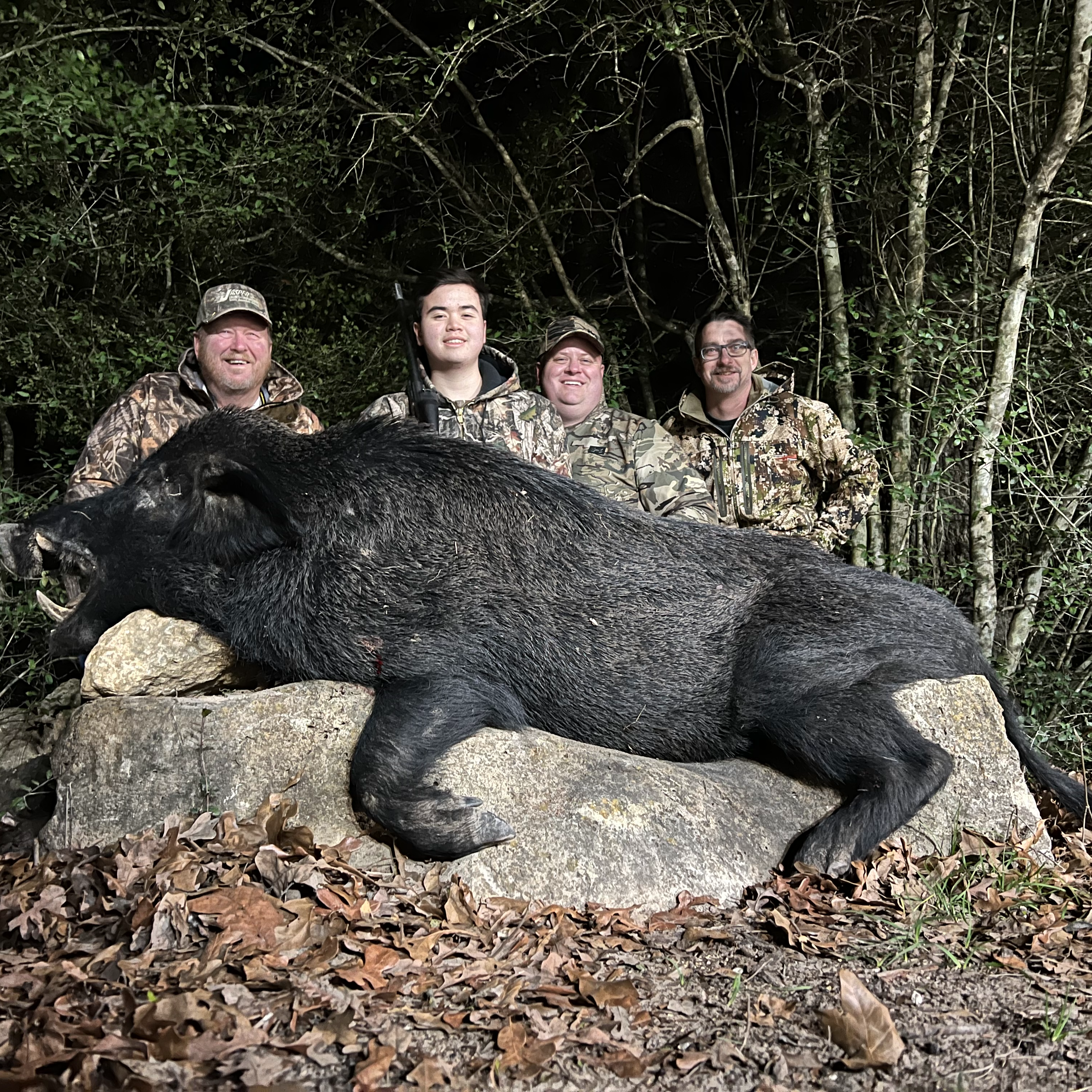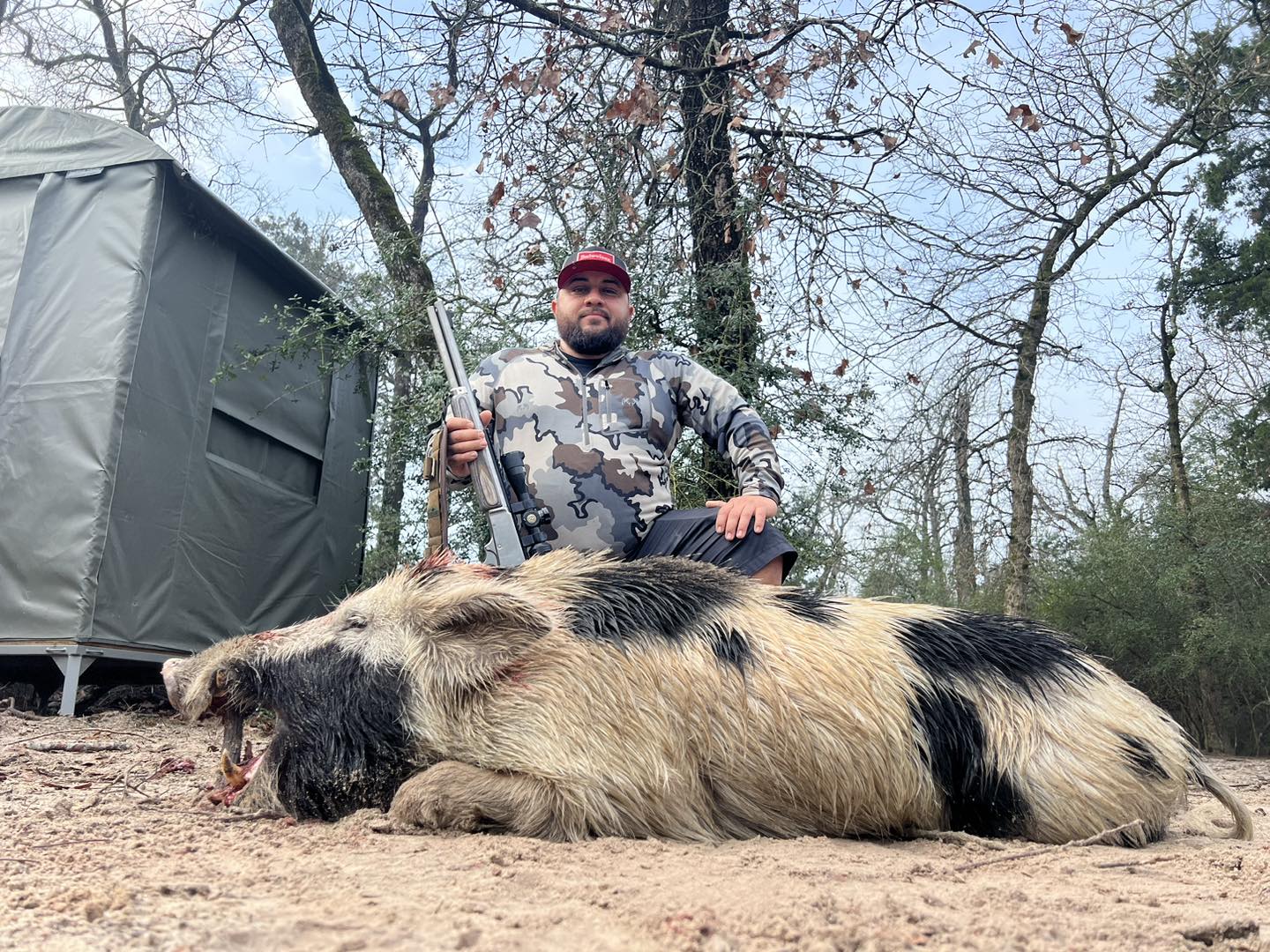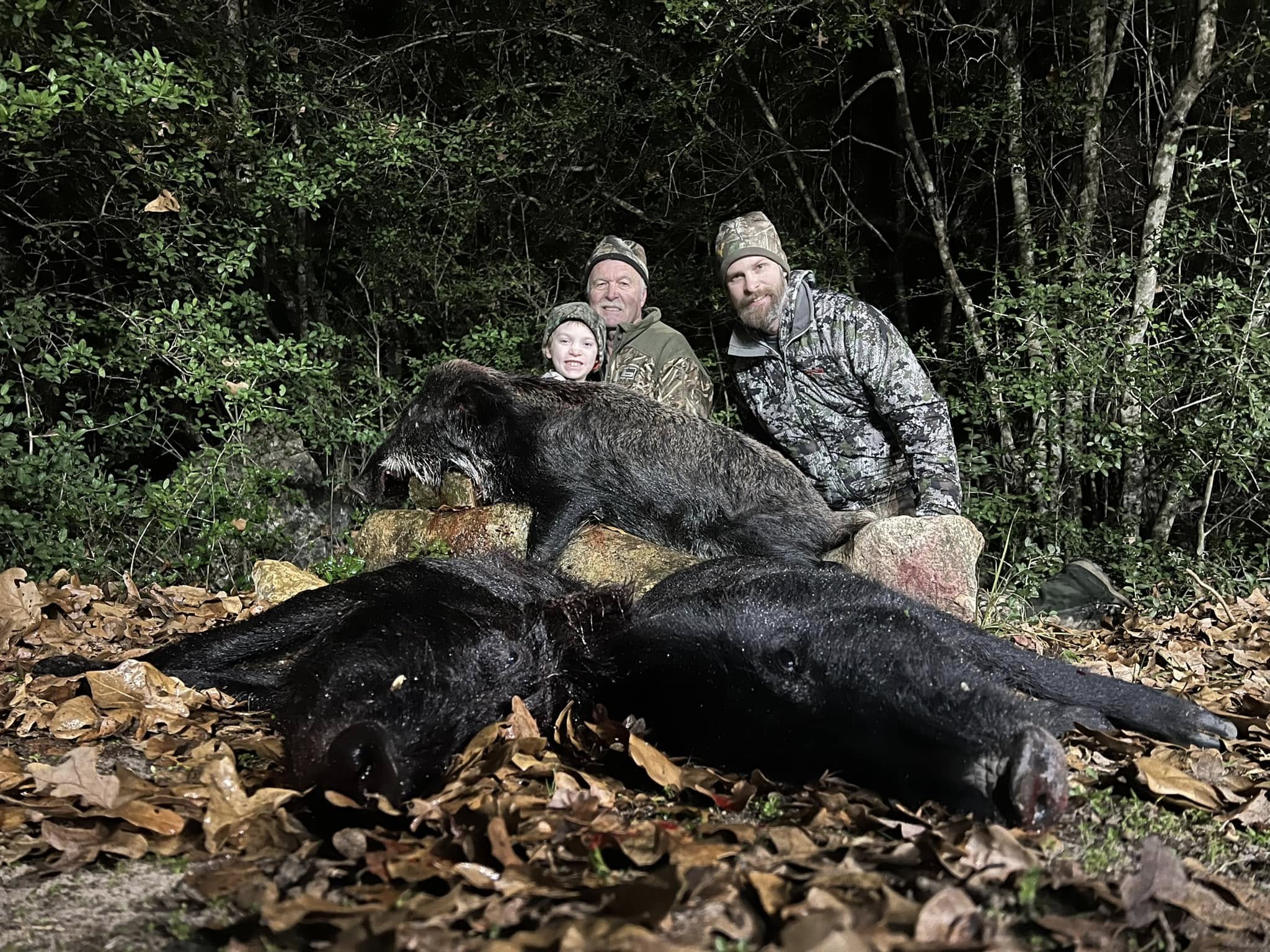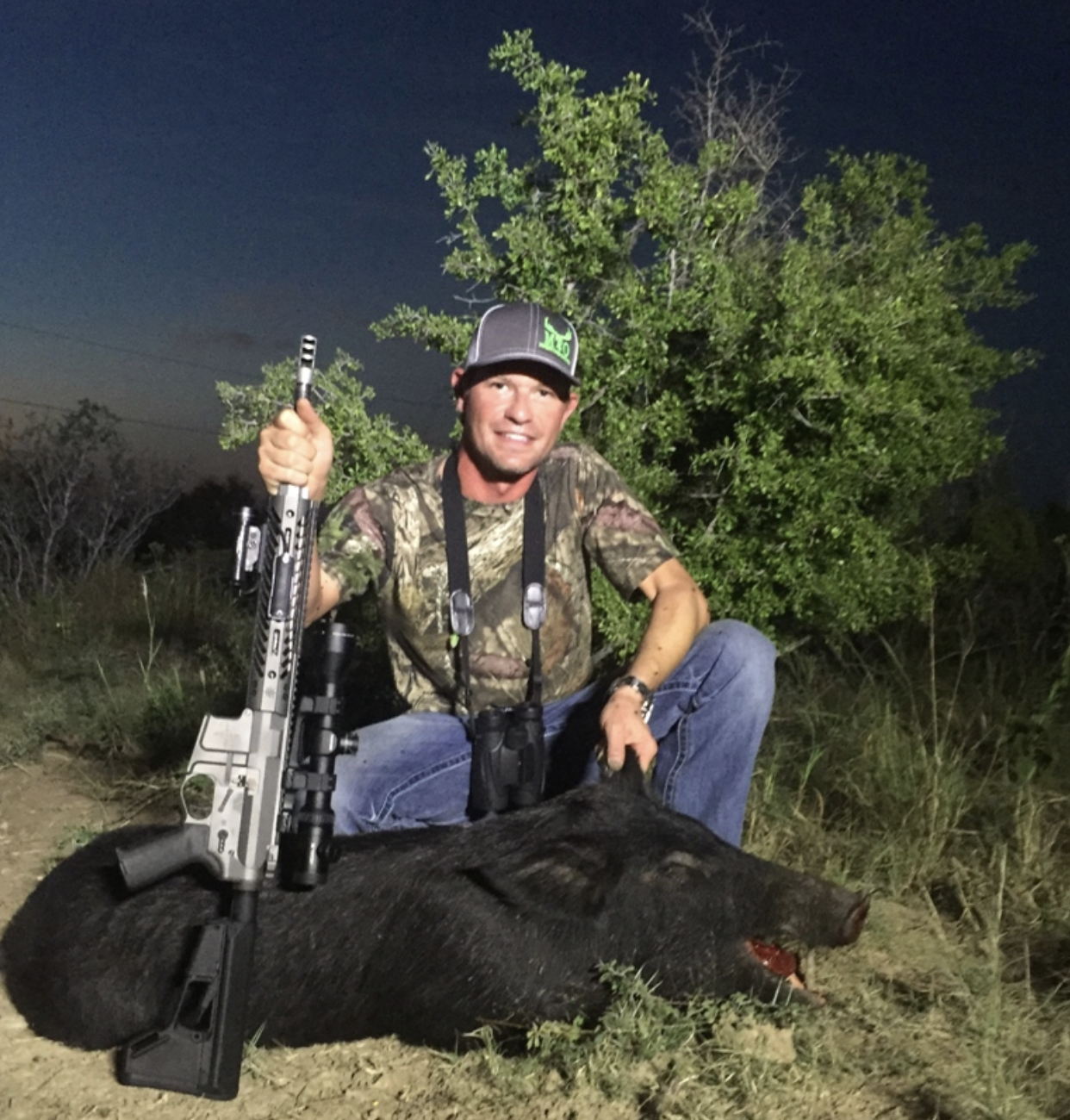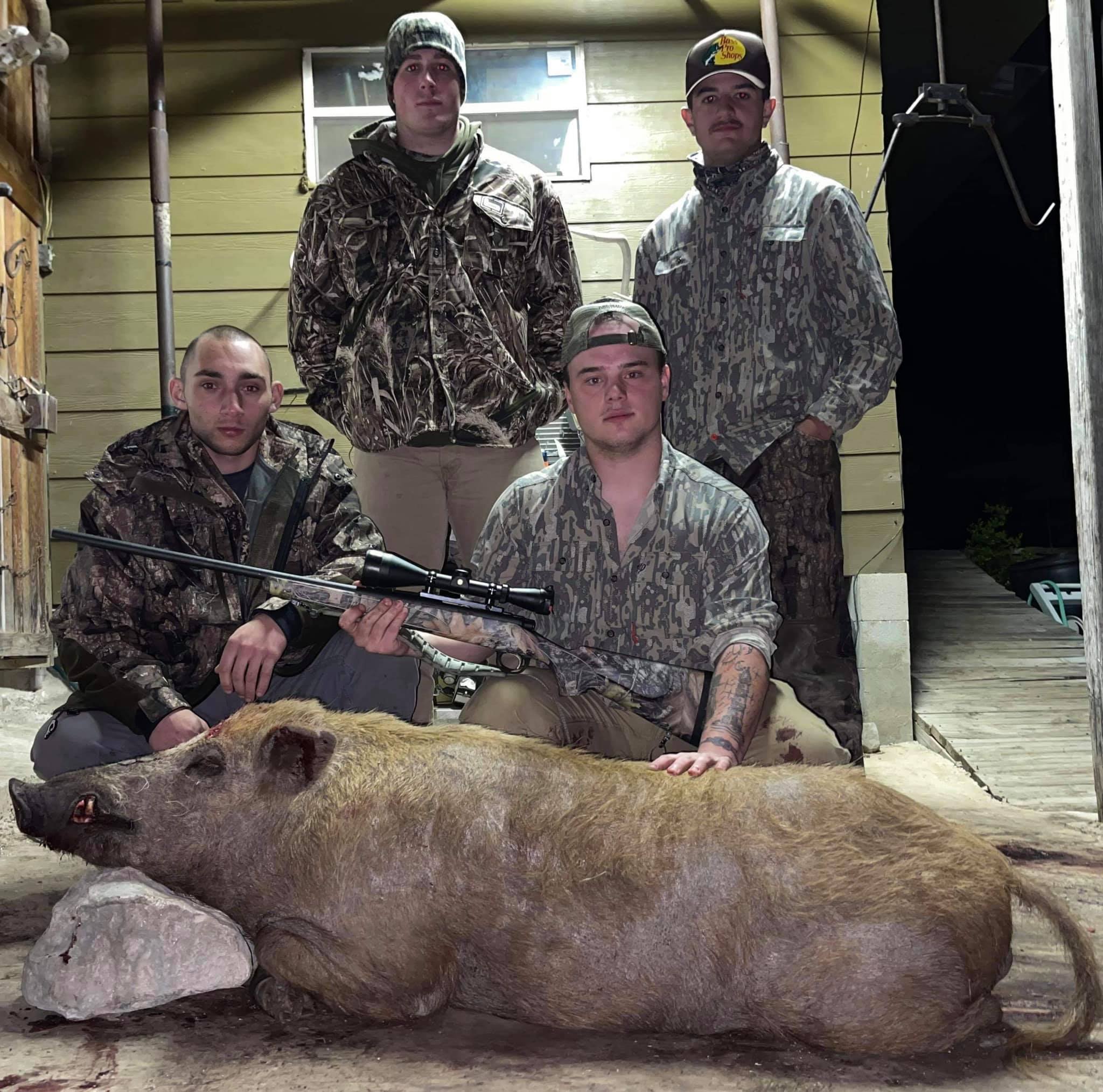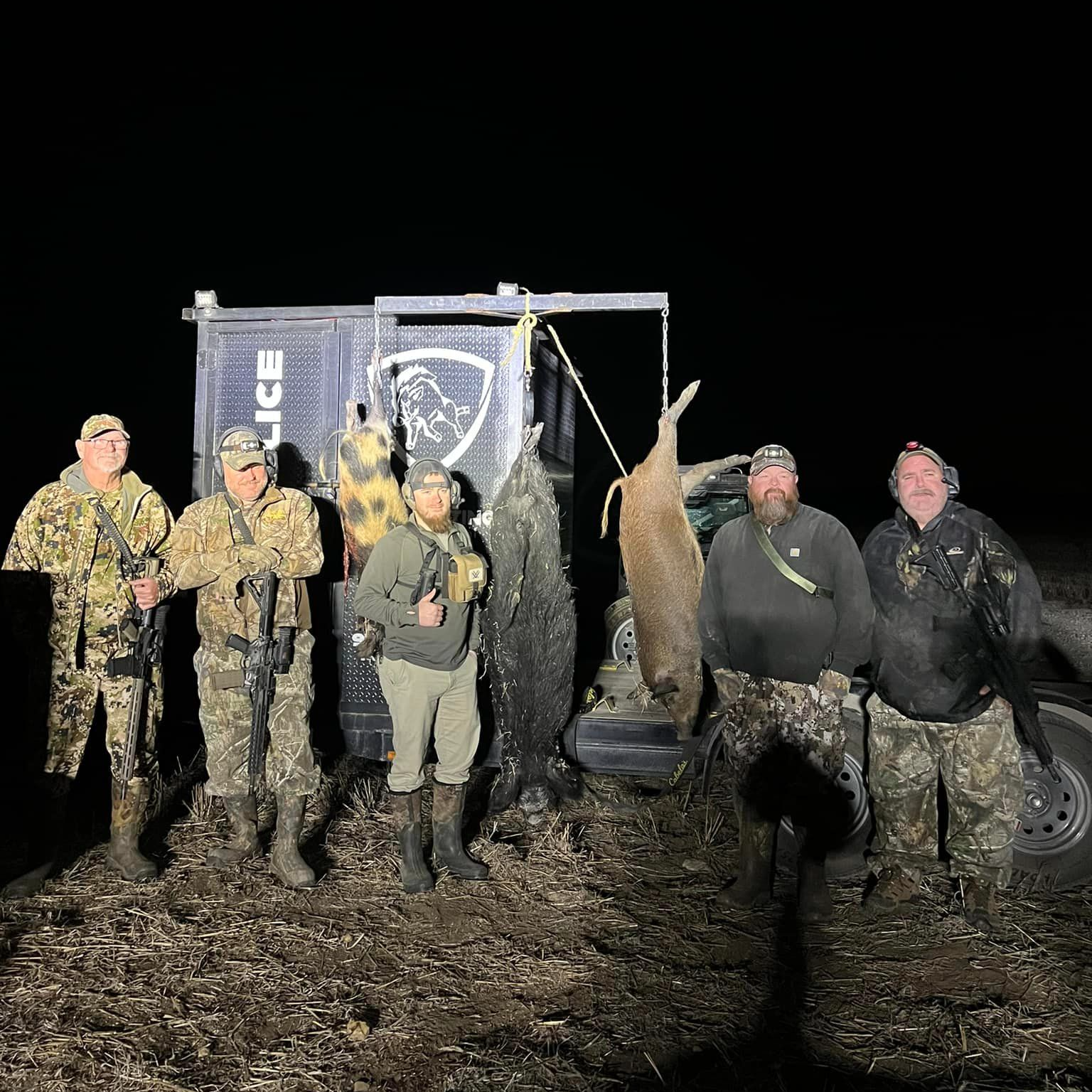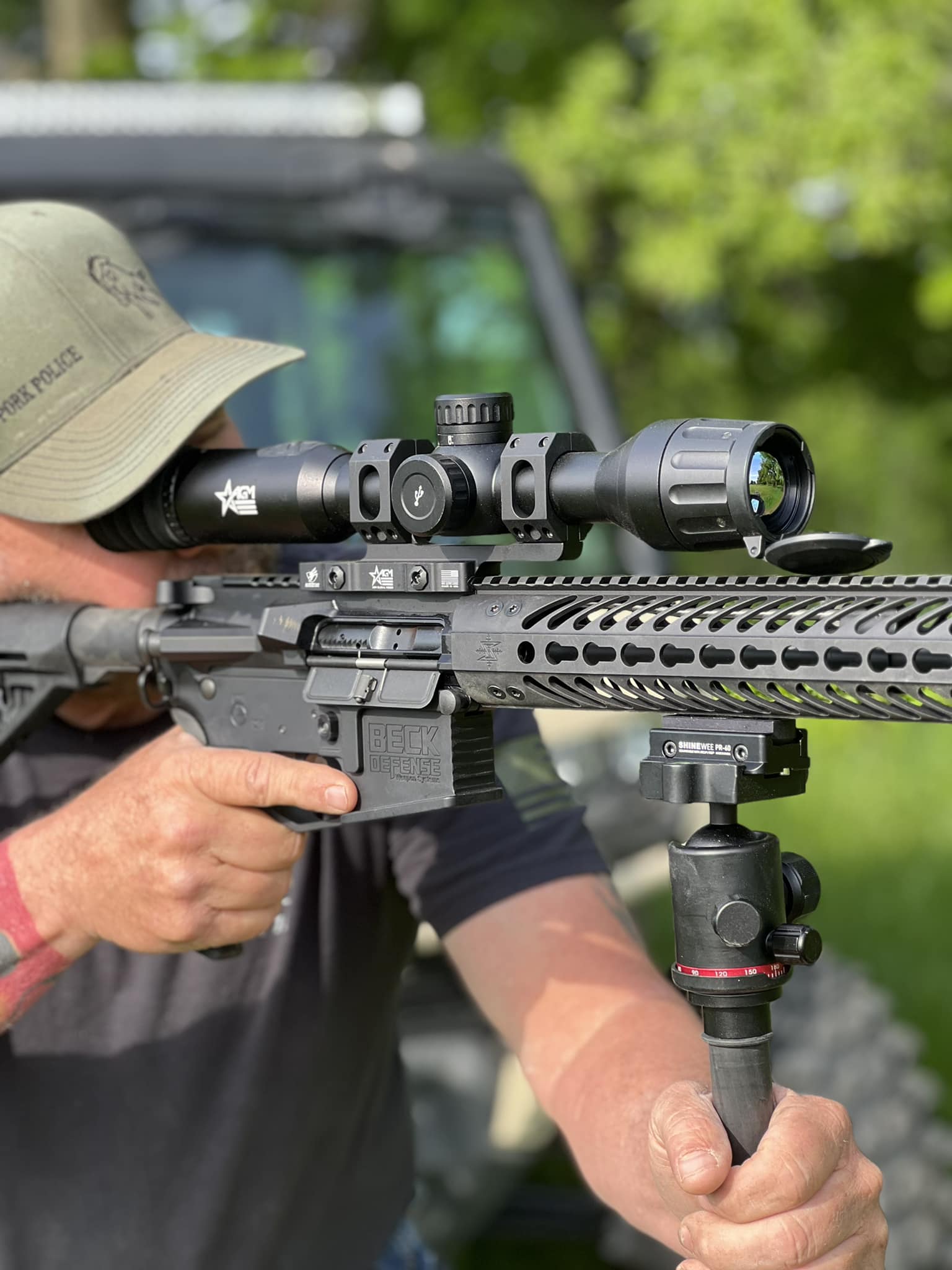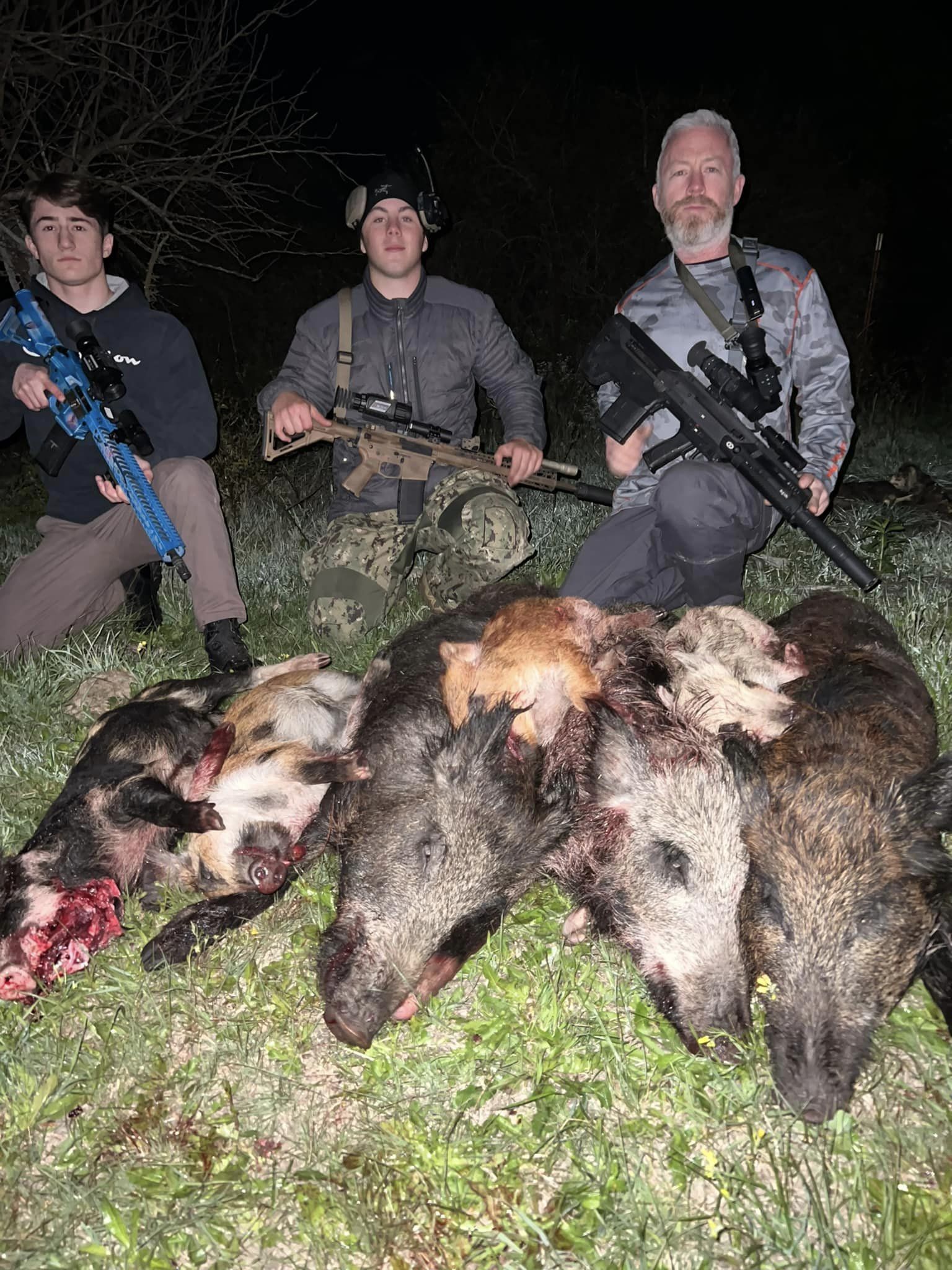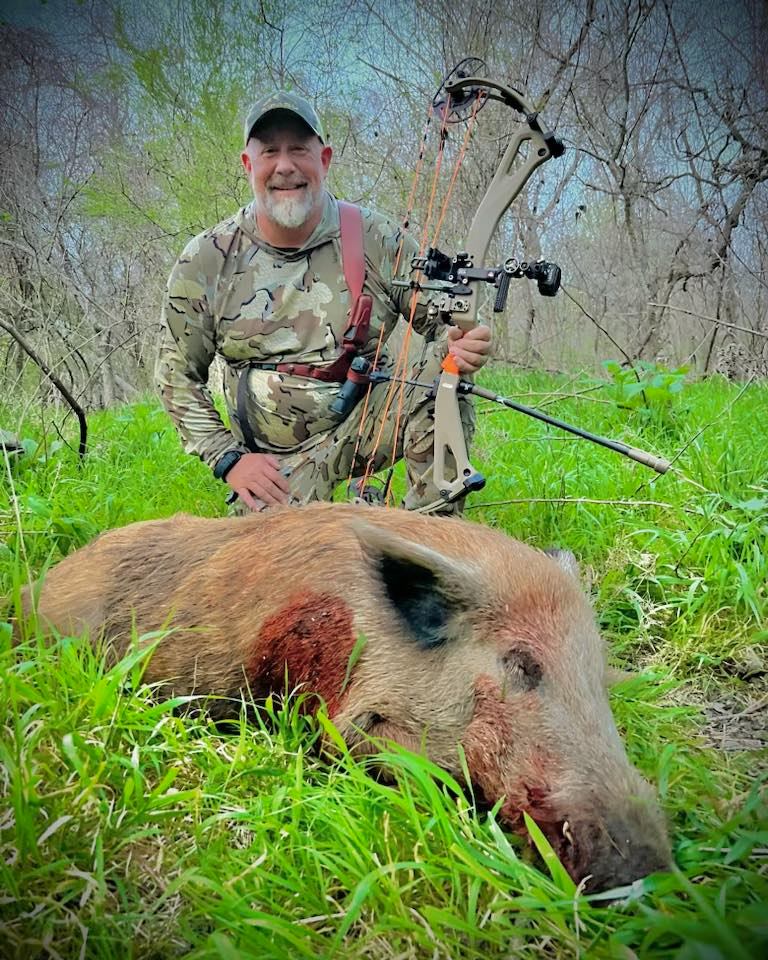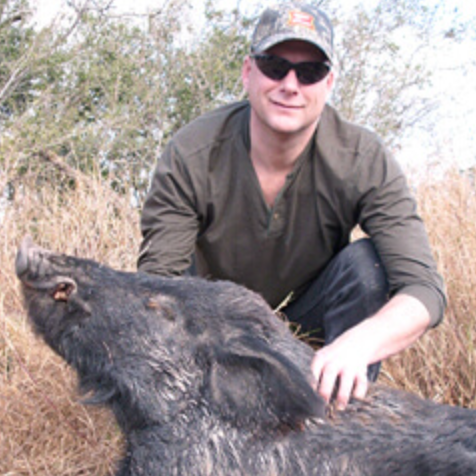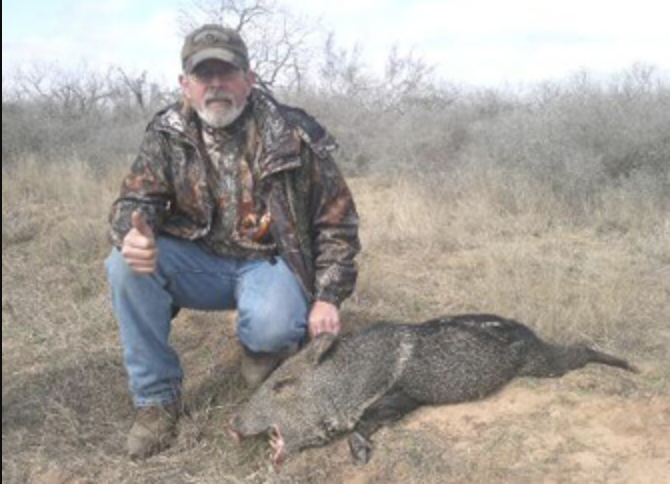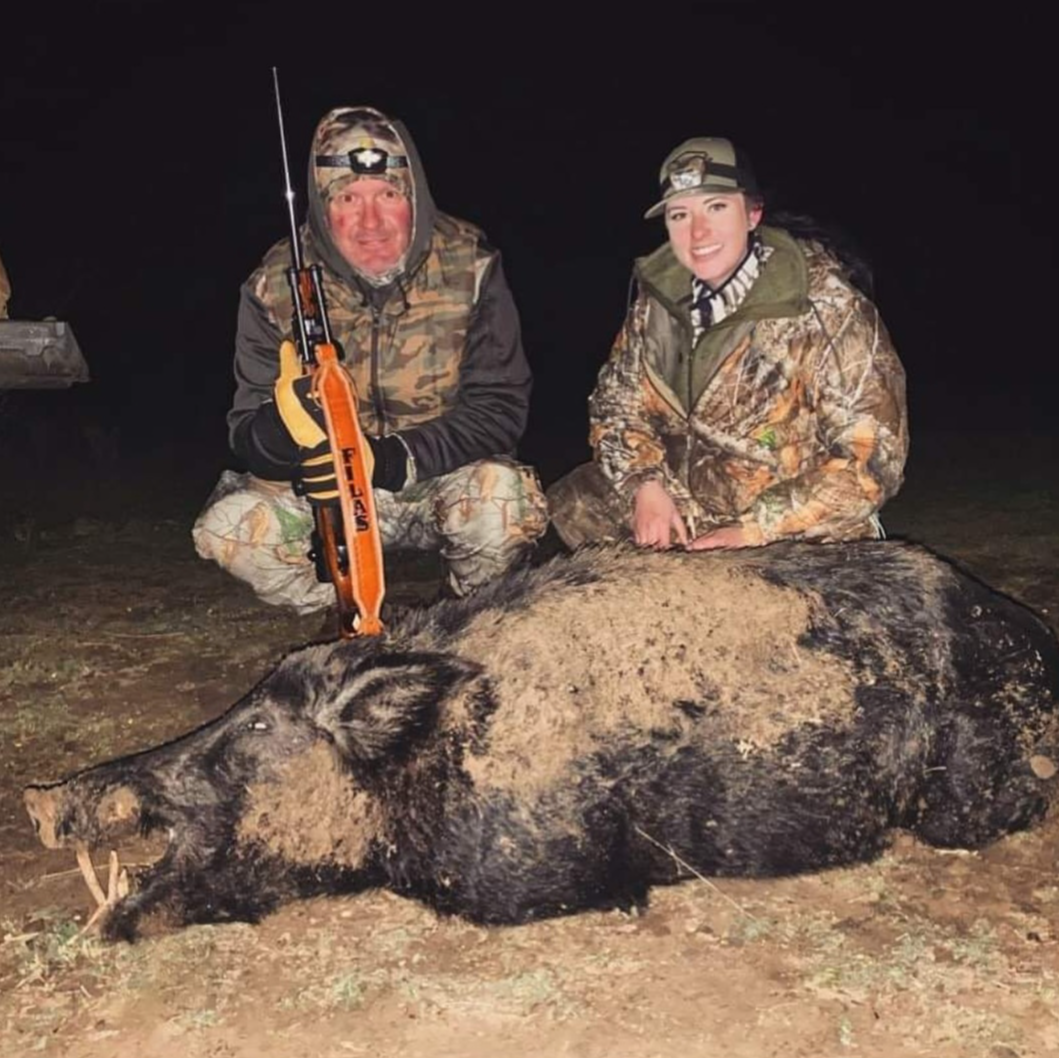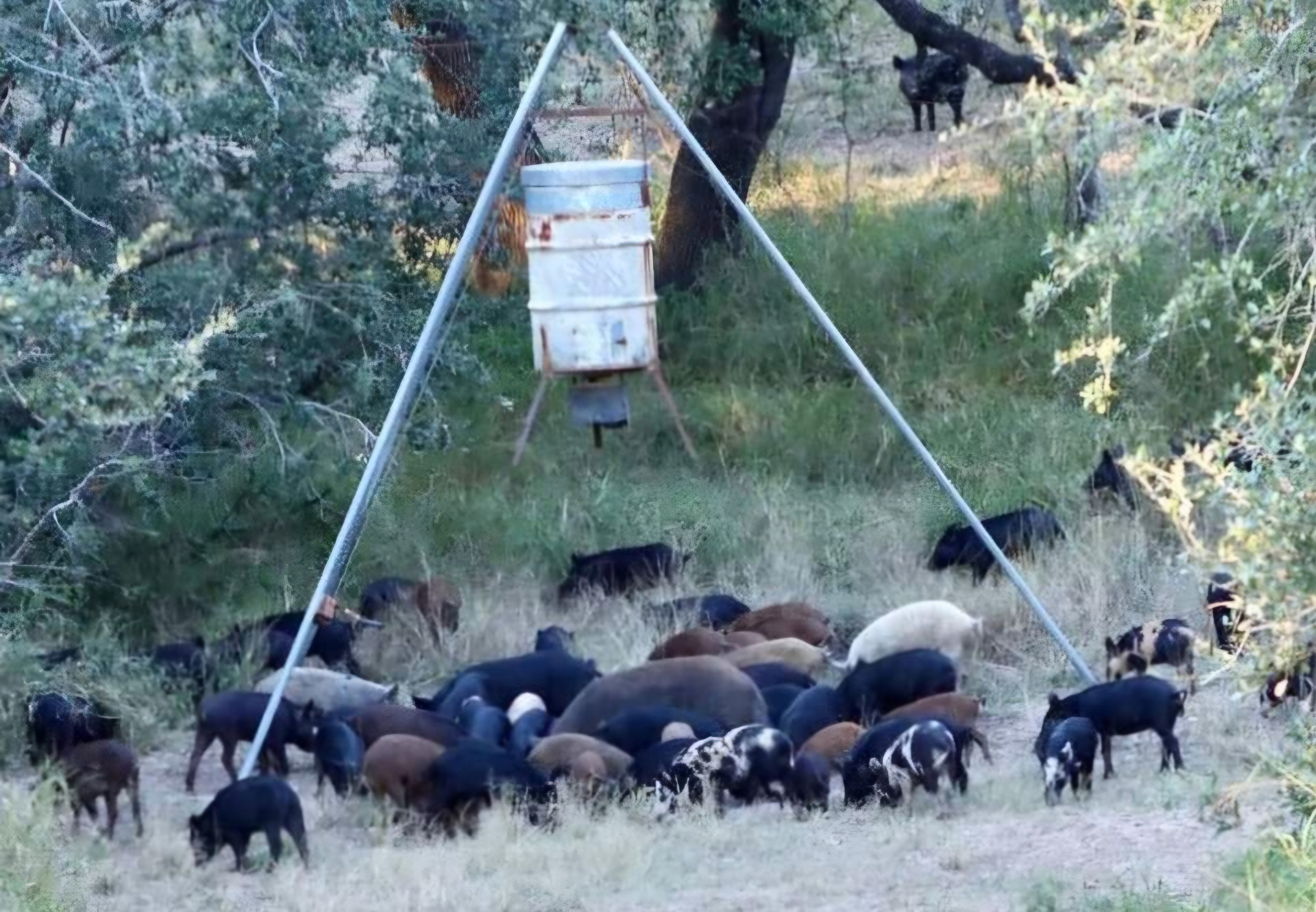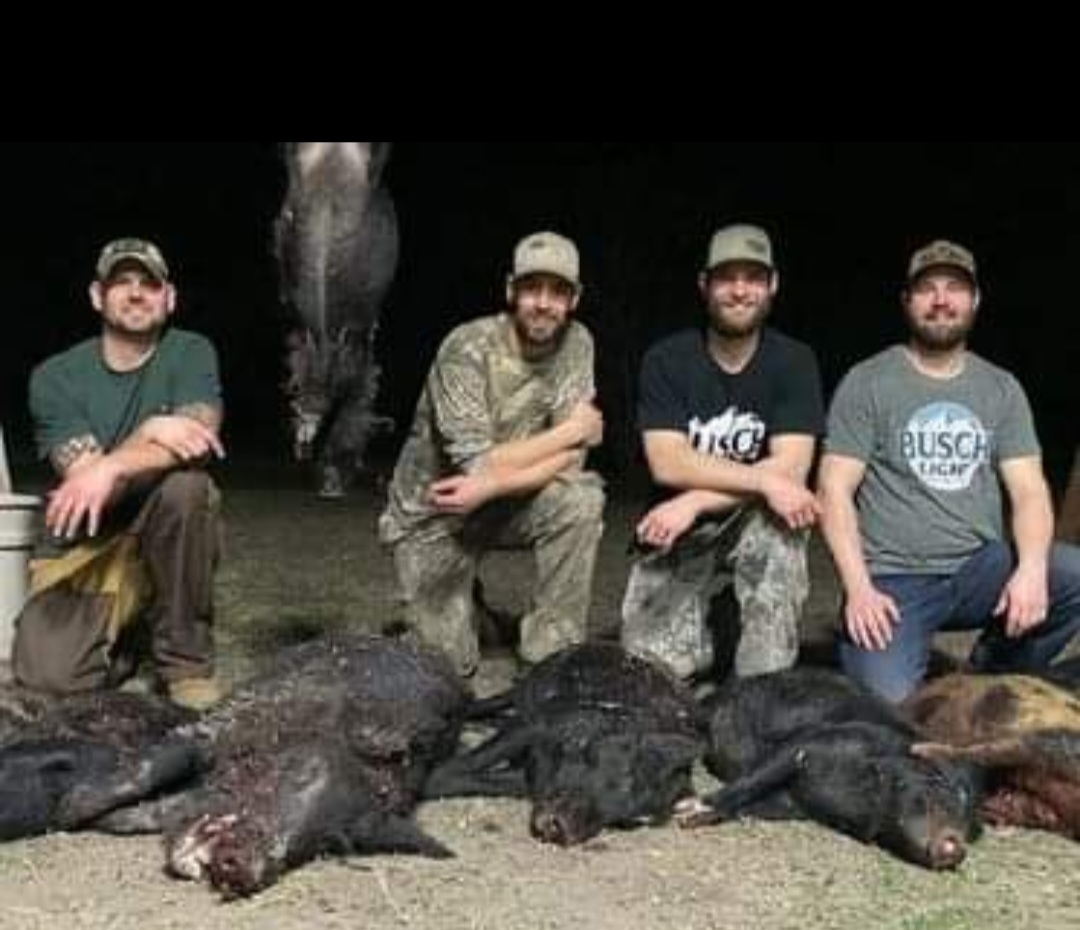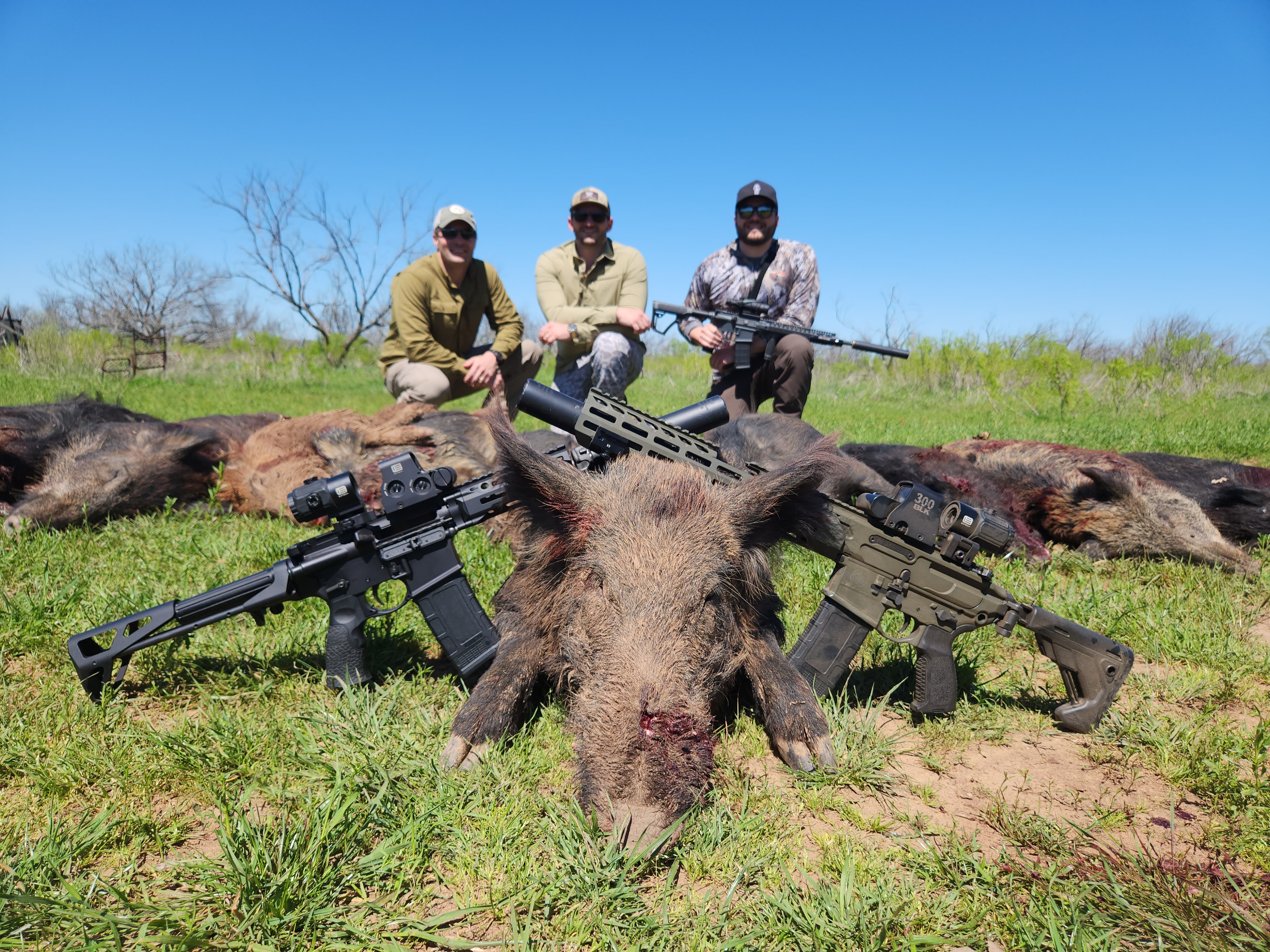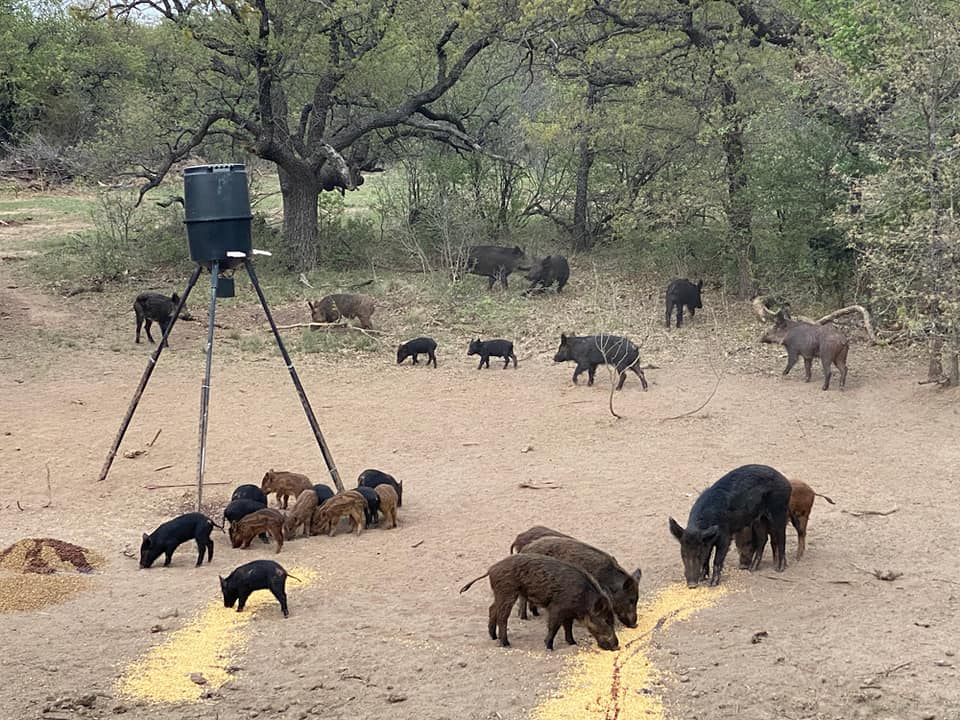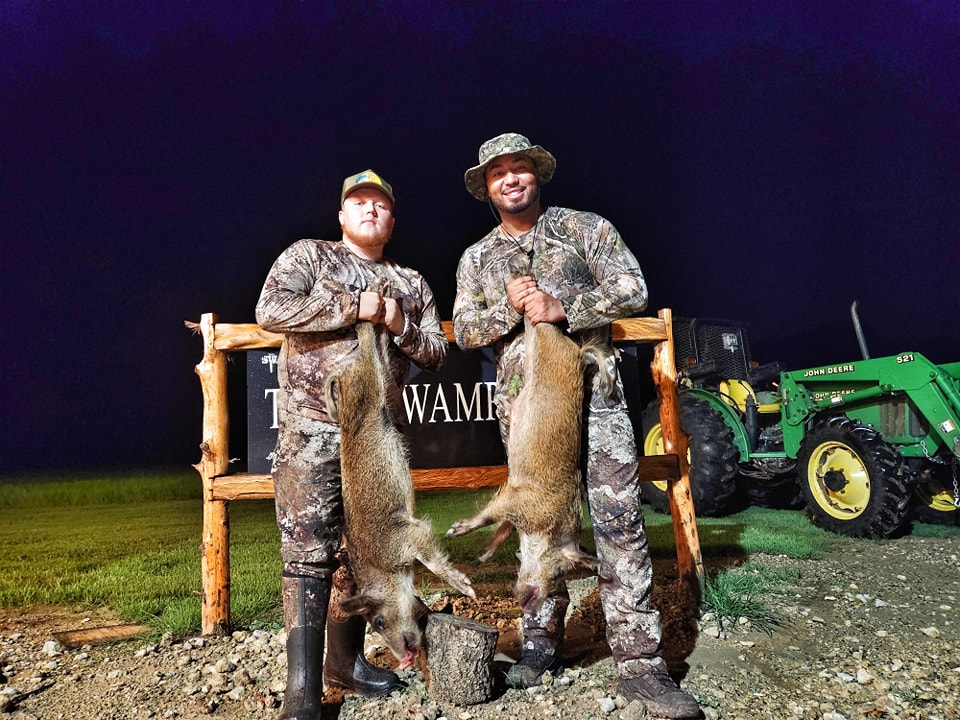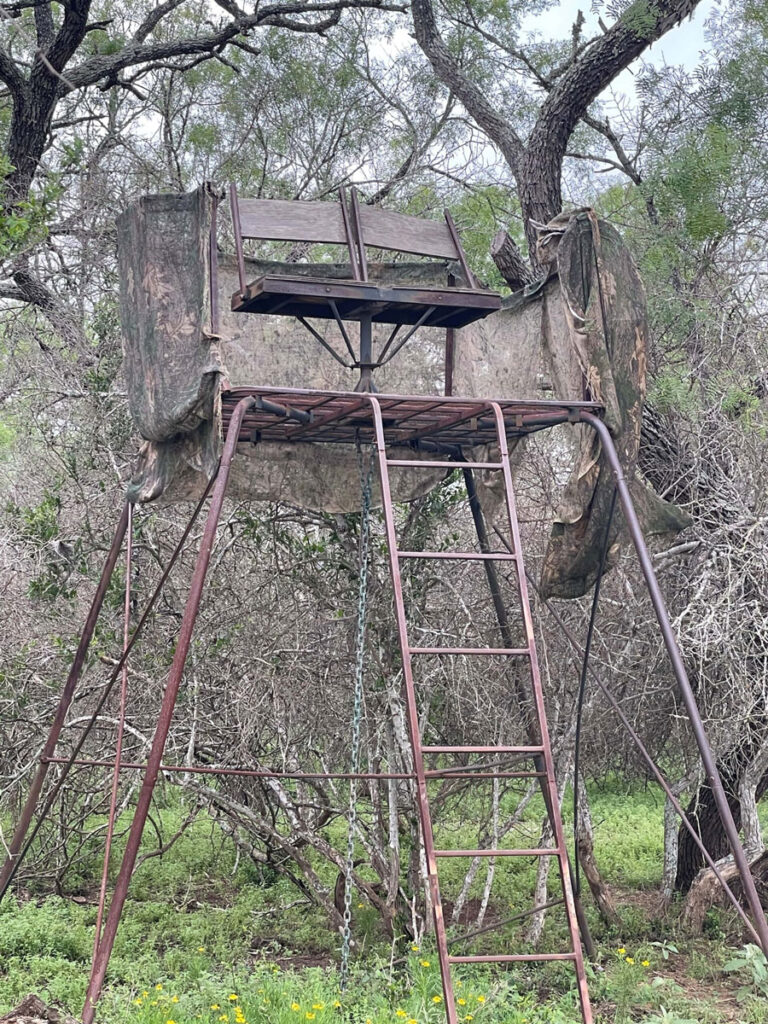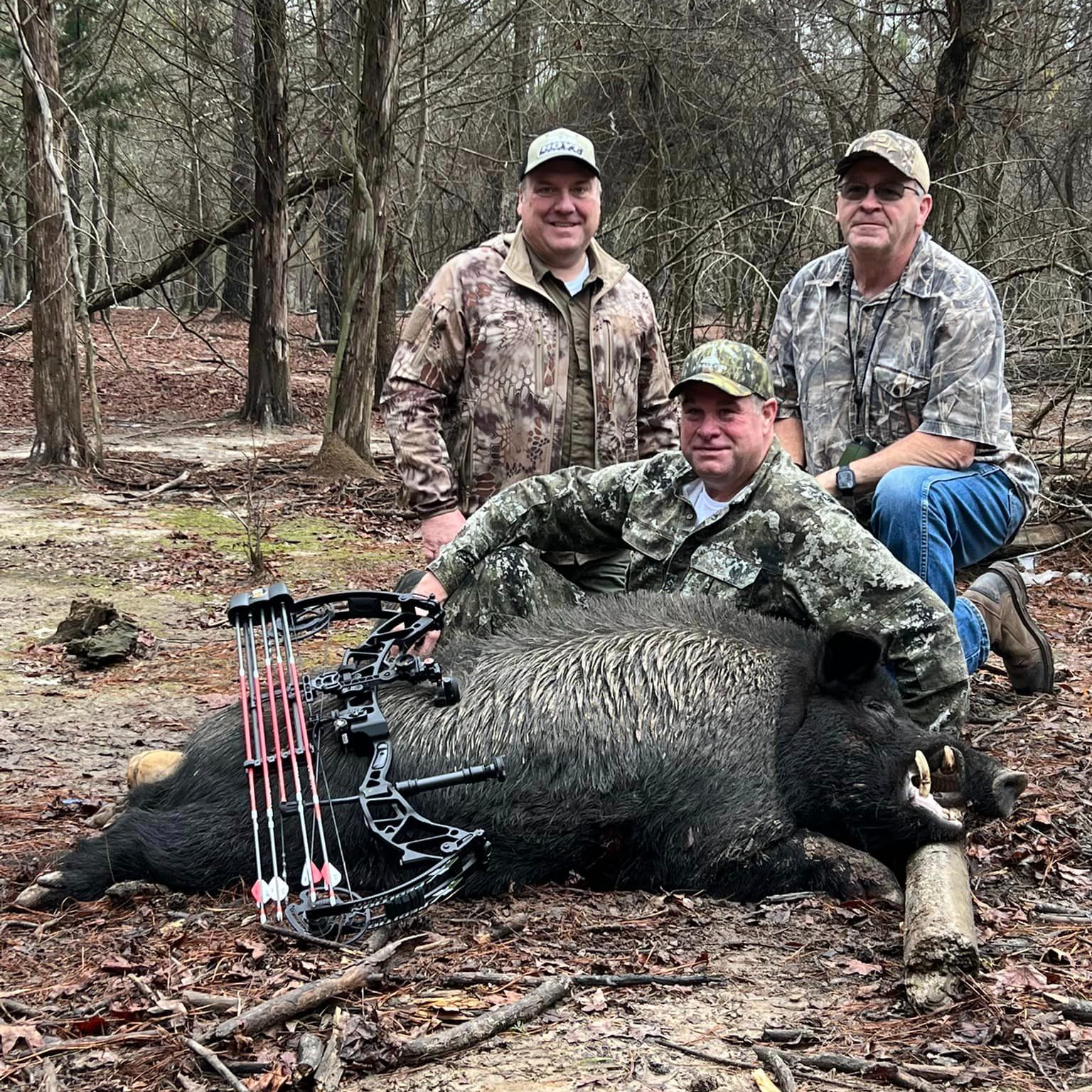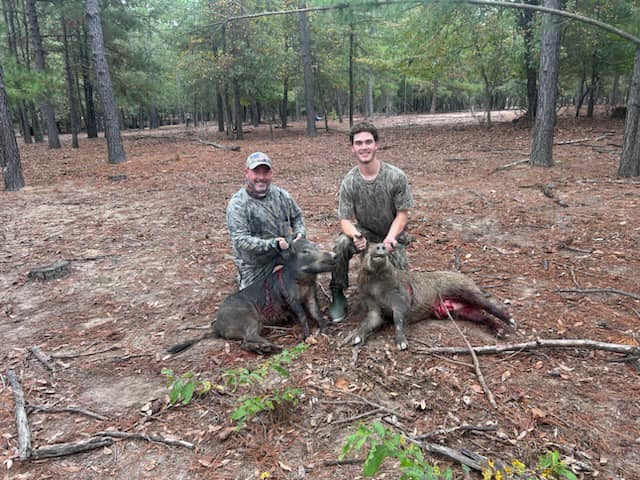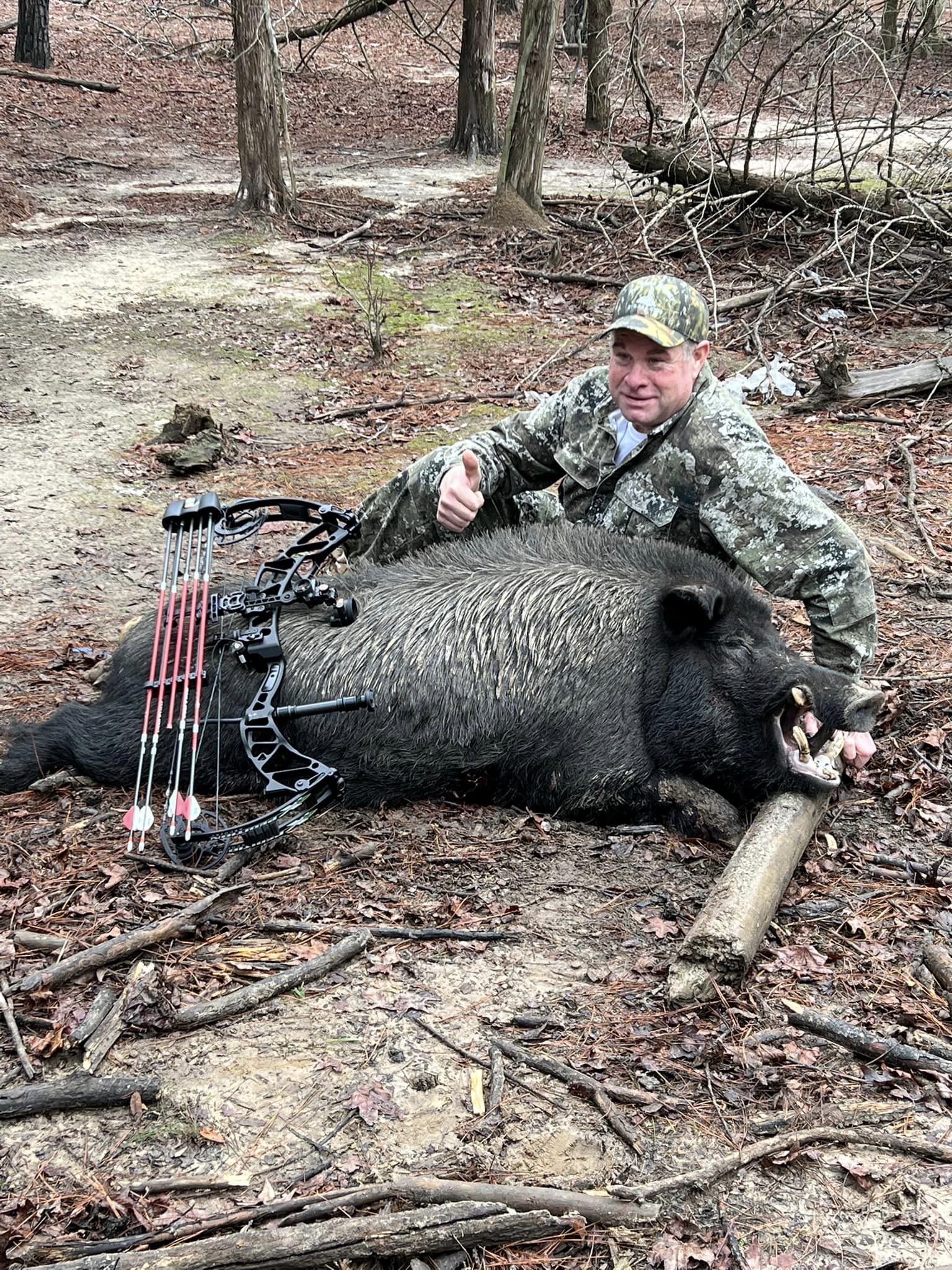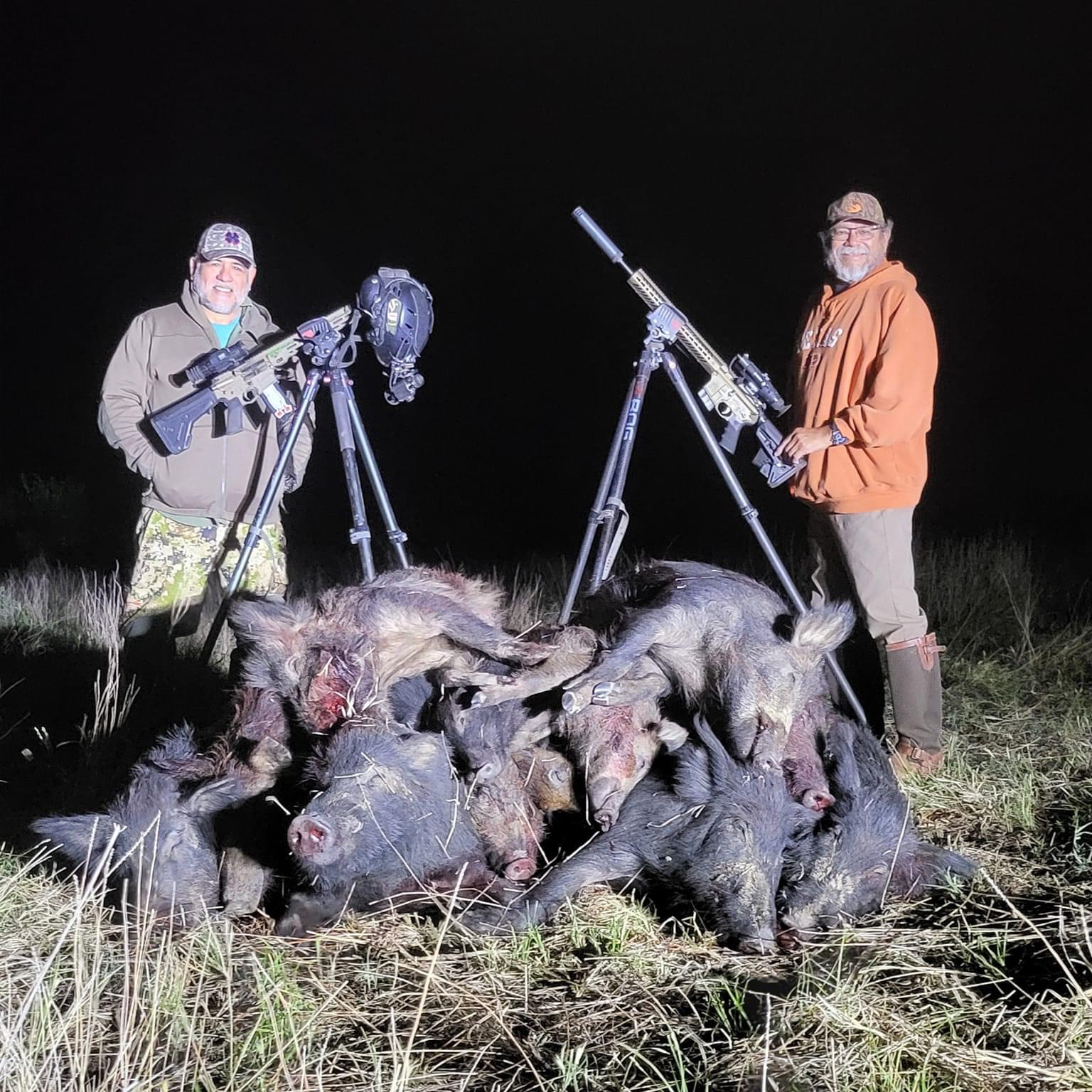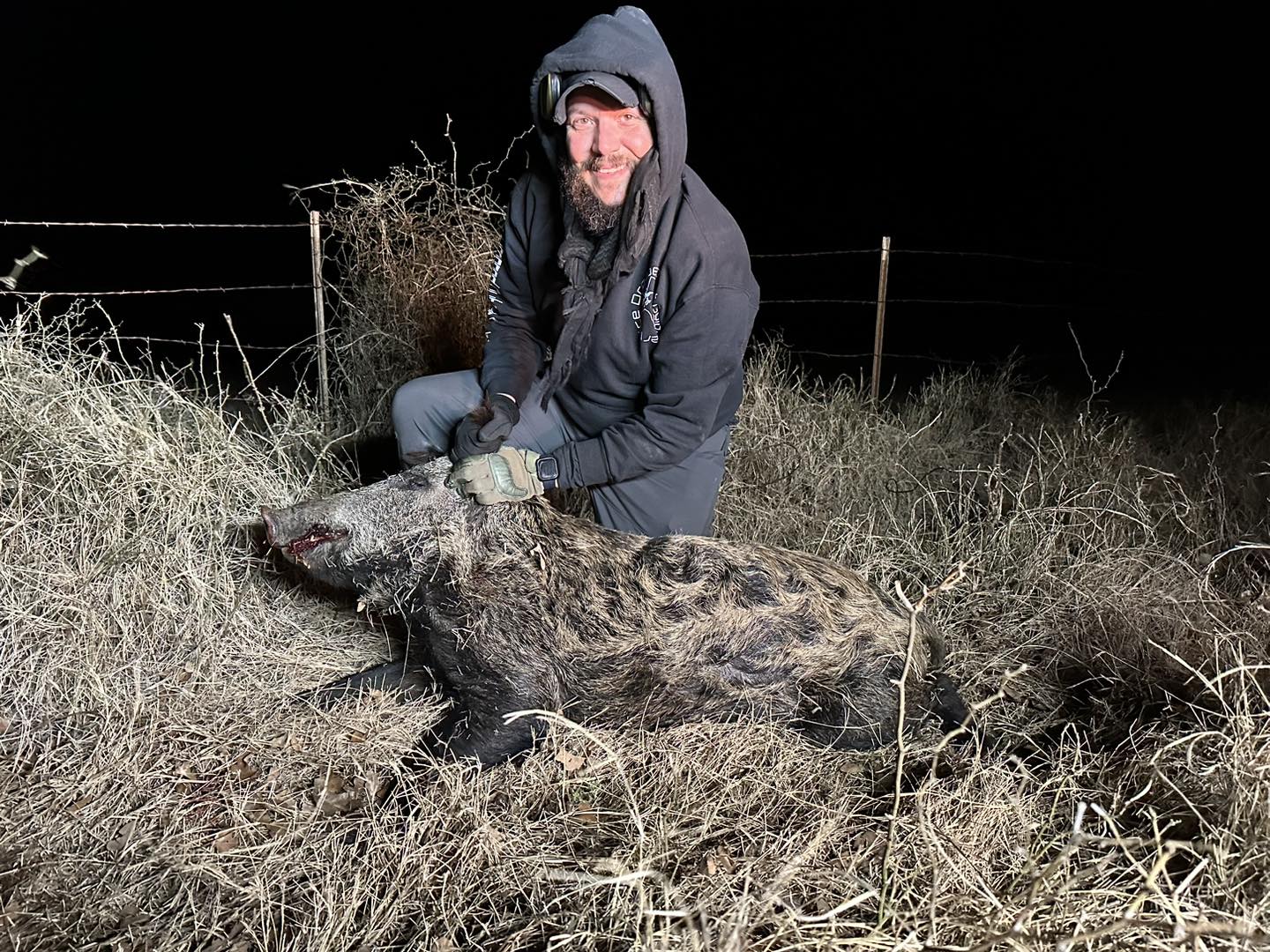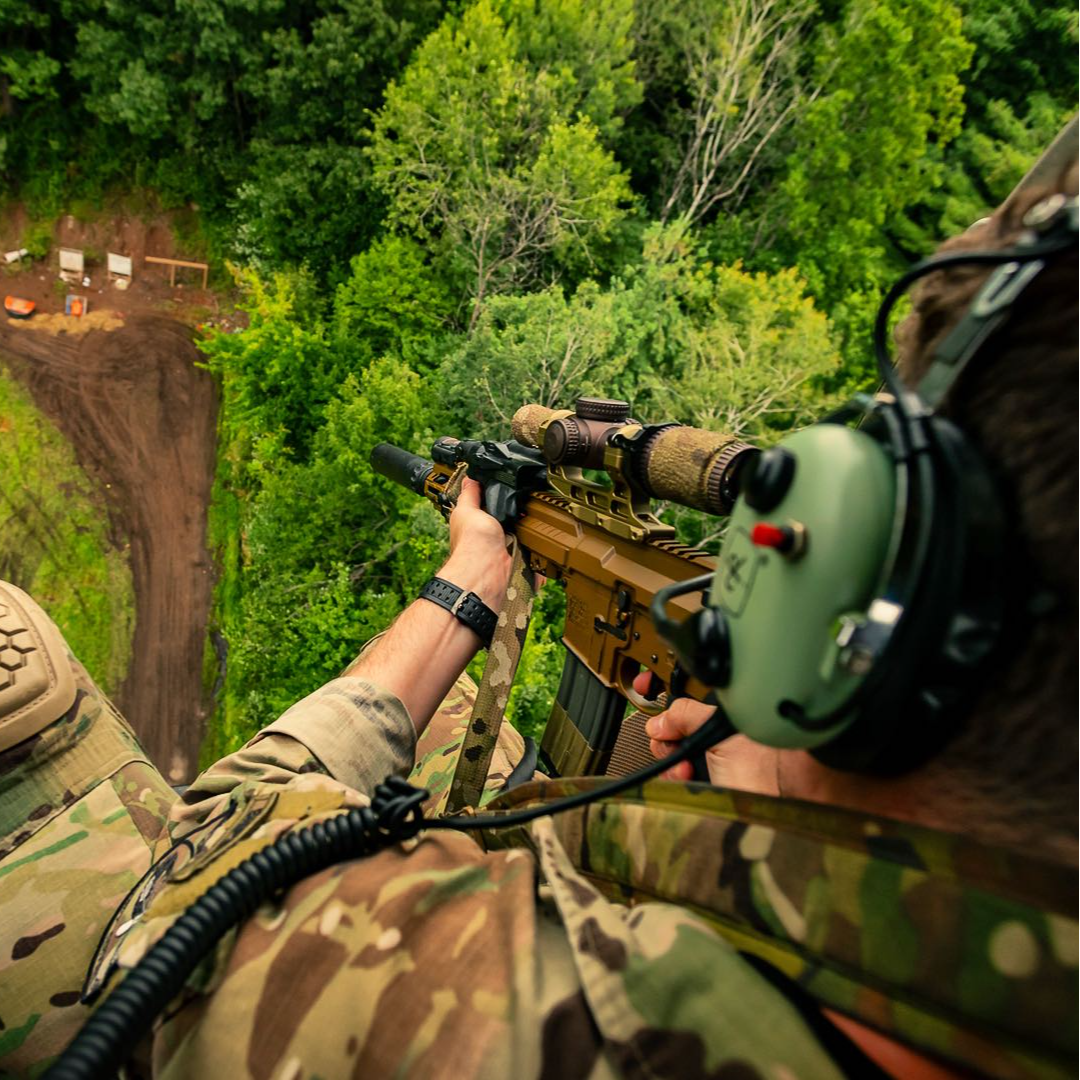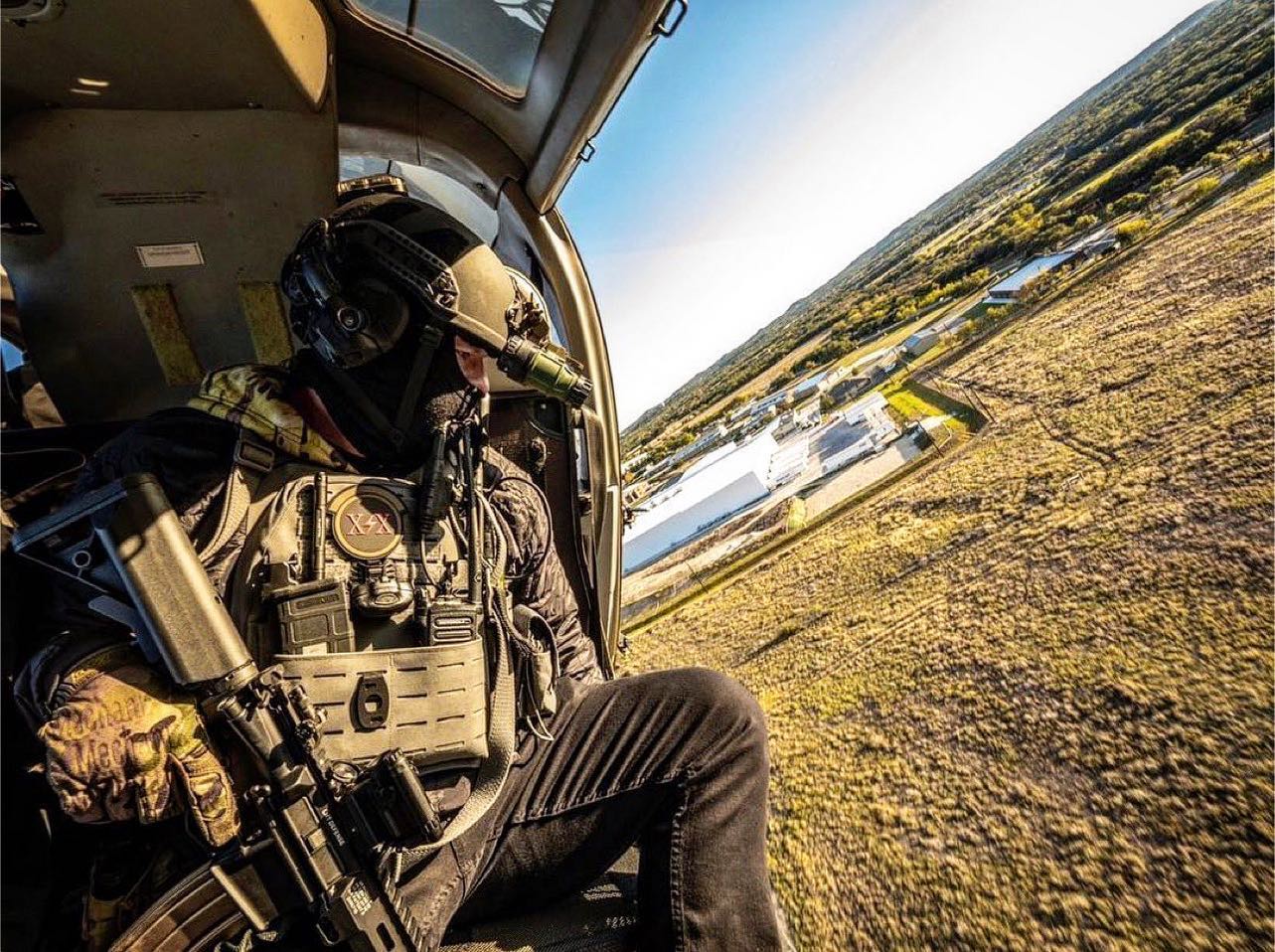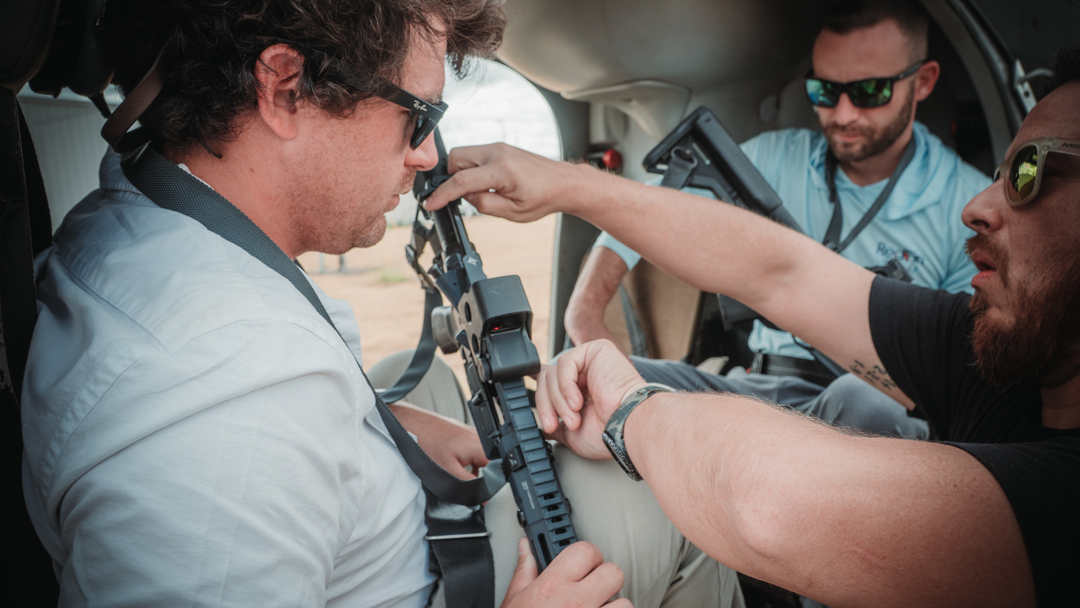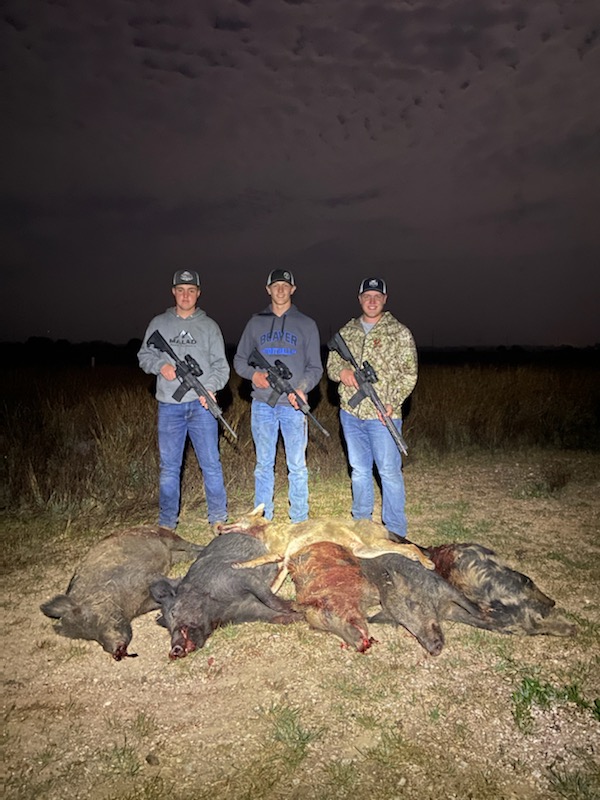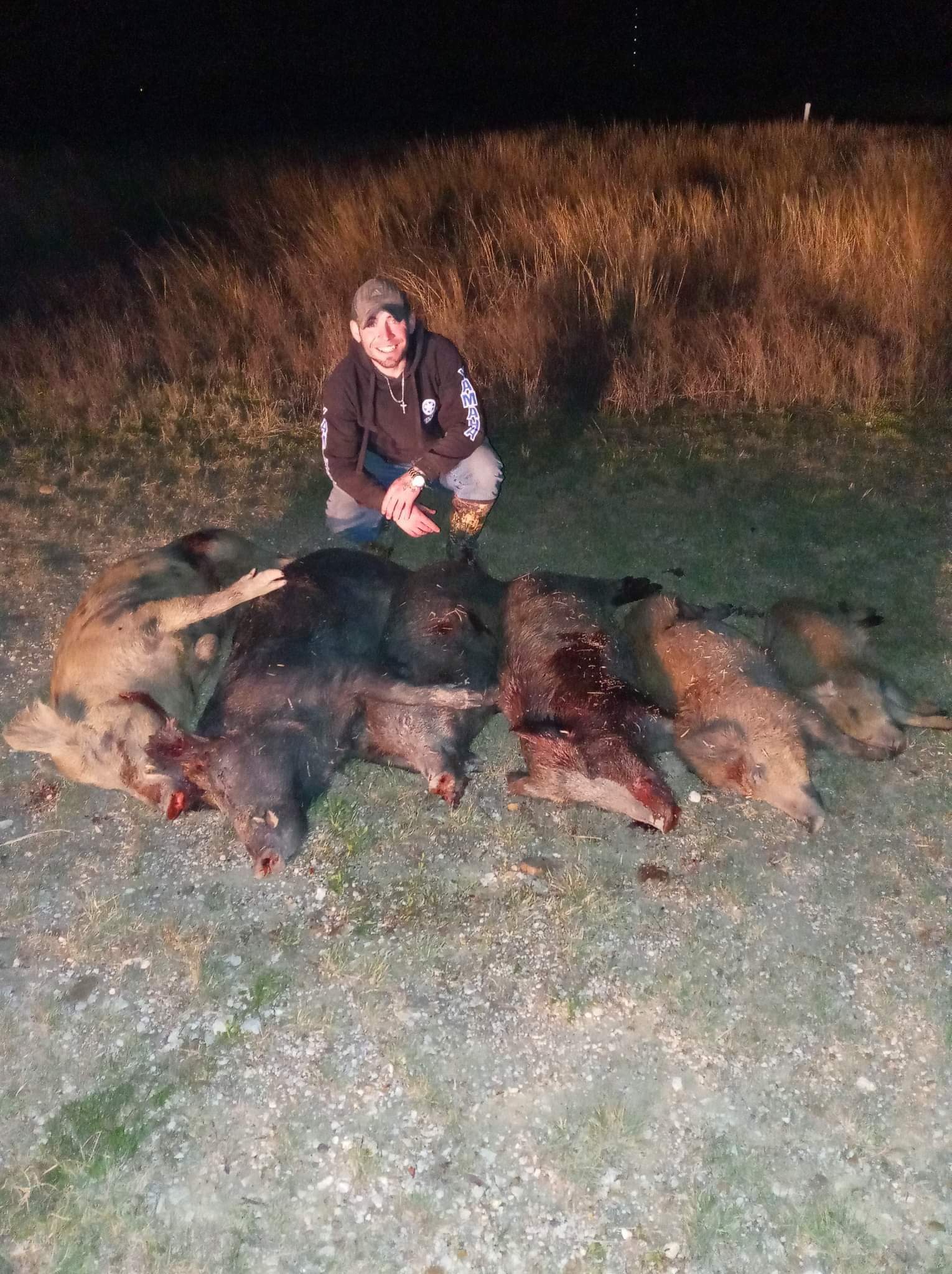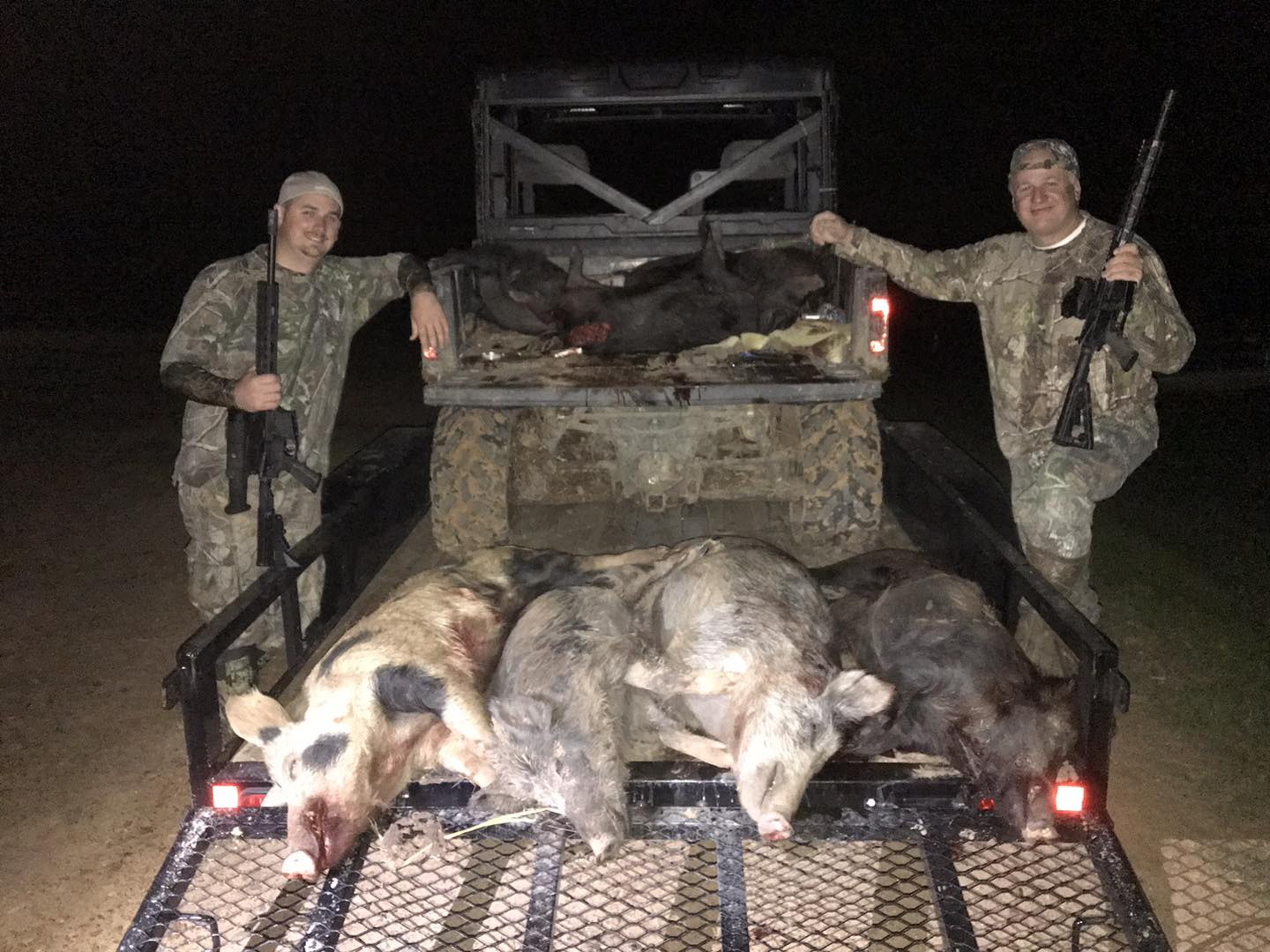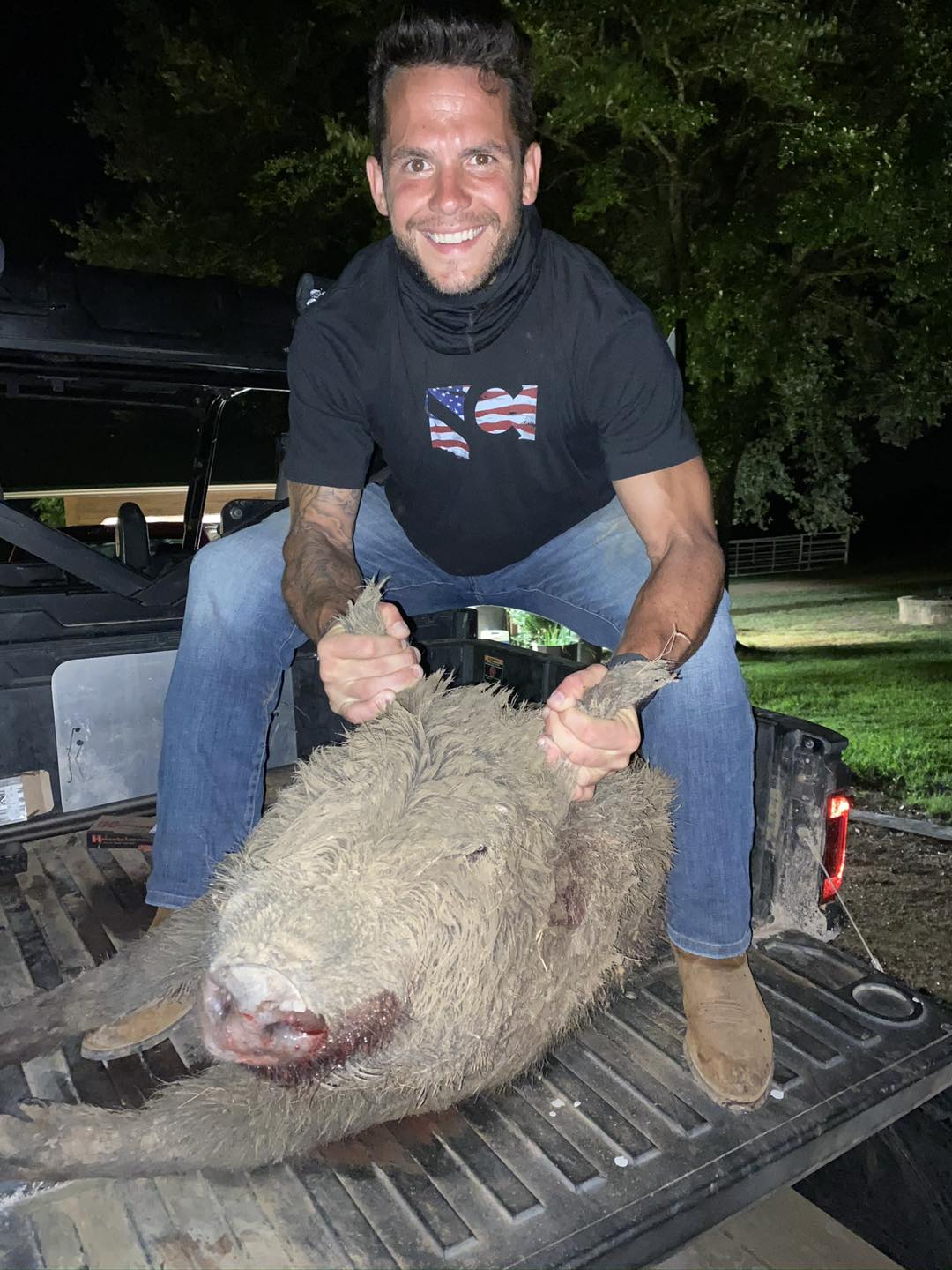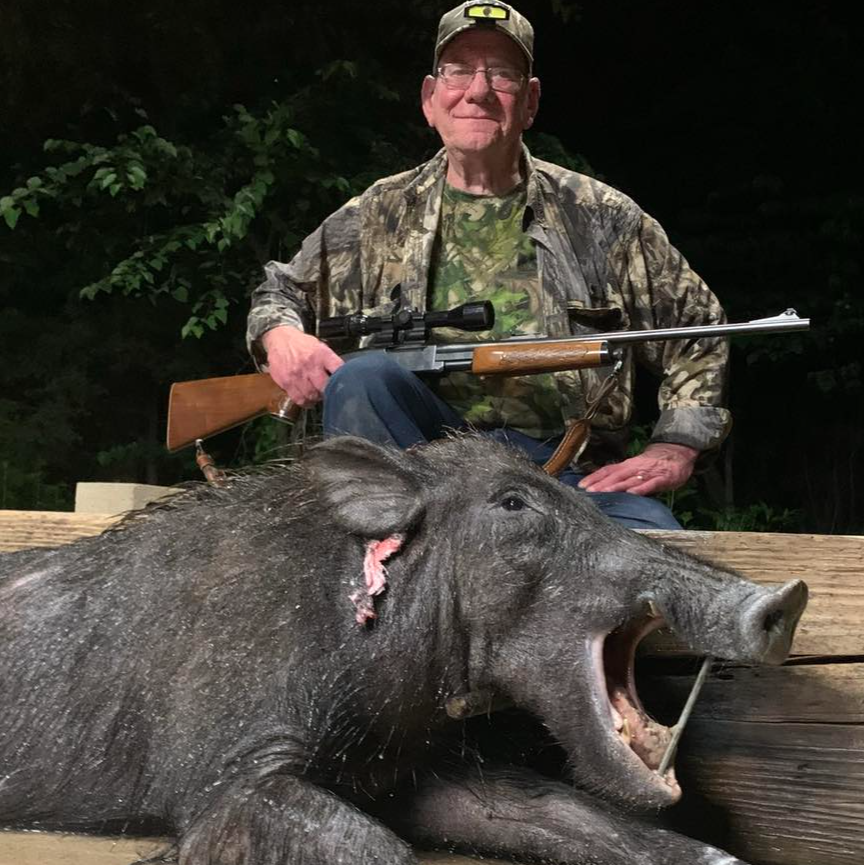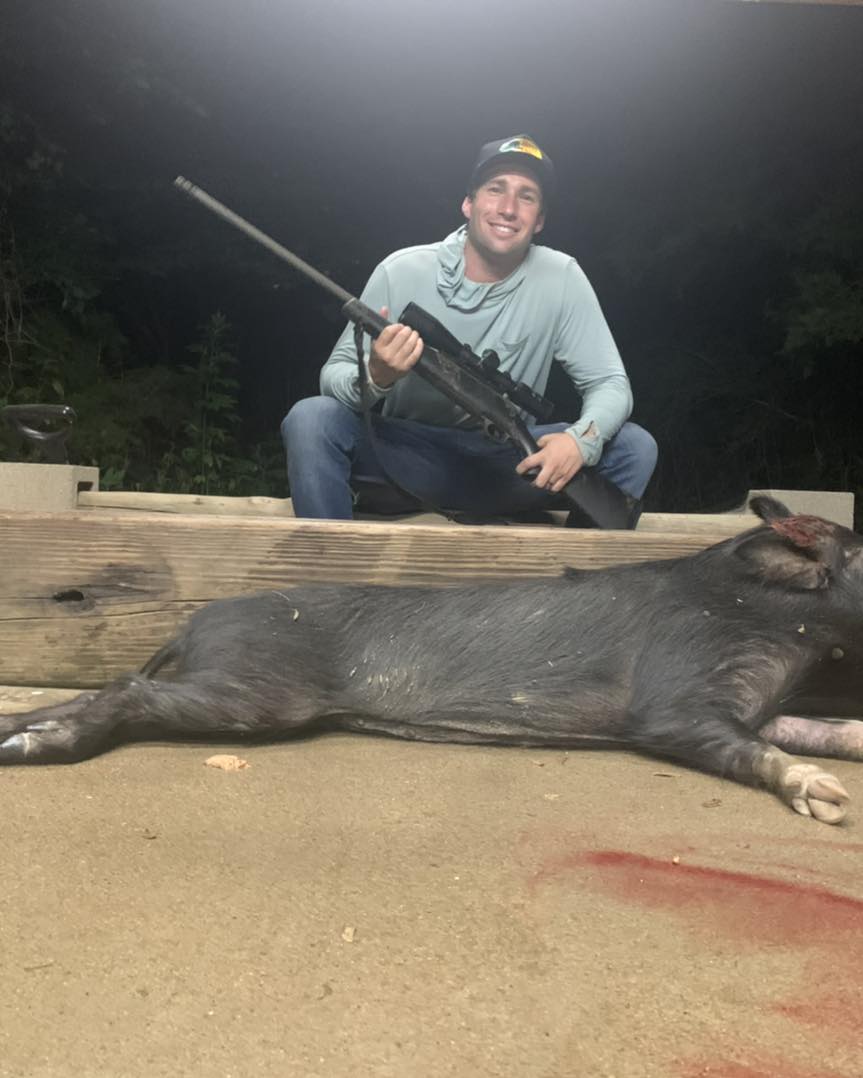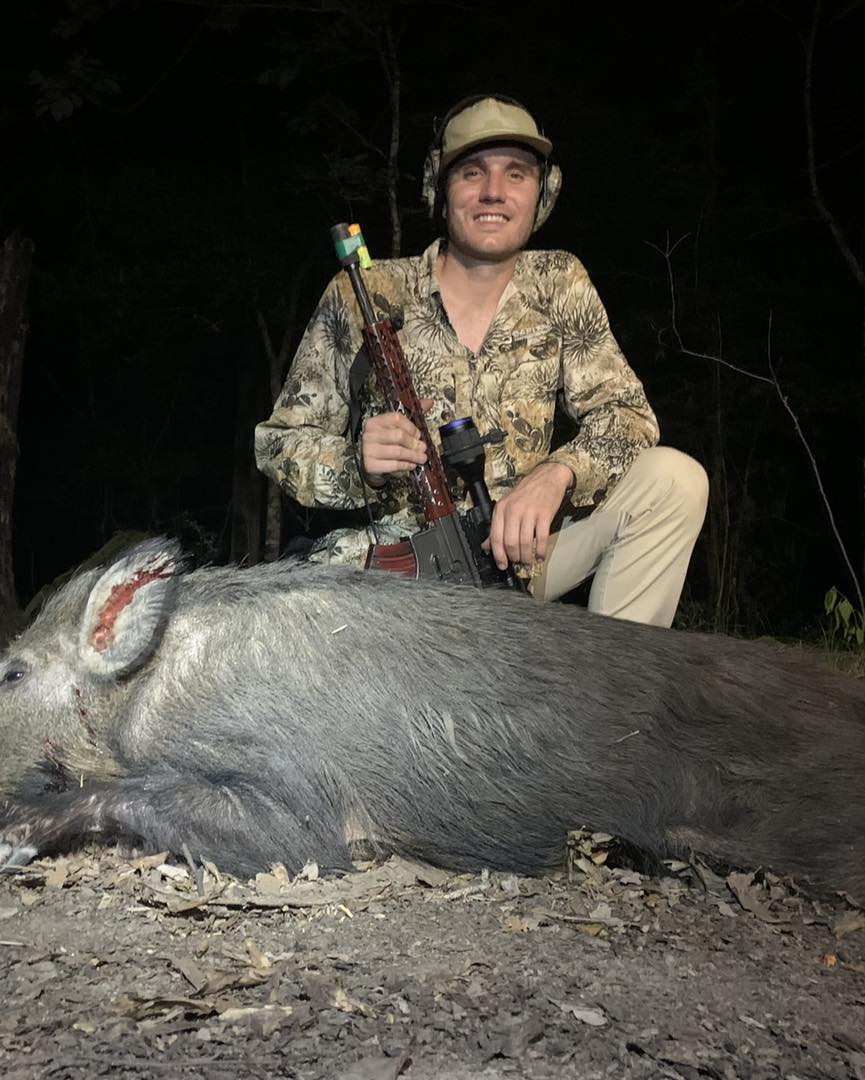Damn Good Guides
Experts Available 24/7
100% Weather Guarantee
Recently Booked Invasive Species Hunting Guides In Texas
Invasive Species Hunting in Bowie
Thermal Hog Spot And Stalk
Invasive Species Hunting in Bowie
Texas Hog Hunting Adventure!!!
Invasive Species Hunting in San Leon
Thermal Hog Takedown!
Invasive Species Hunting in Van Horn
West Texas Whitetail
Invasive Species Hunting in Centerville
Texas Hog Shoot!
Invasive Species Hunting in Rockport
Hog Heaven
Top Cities for Invasive Species Hunting in Texas
“Our Damn Good Guides go above and beyond, and we’ve handpicked every single one. We’re passionate about the outdoors and look forward to getting you out on the trip of a lifetime, every time.”
Jonathan and Attison | Co-founders | Austin, Texas
More Invasive Species Hunting Guides In Texas
Invasive Species, Predator Hunting in Abilene
Takin' Down Texas Hogs
Invasive Species Hunting in Sargent
Houston Area Thermal Hog Hunt
Invasive Species Hunting in Long Lake
Texas Thermal Hog Hunt
Invasive Species Hunting in Groesbeck
24 Hour Hog Hunt W/Lodging
Invasive Species, Predator Hunting in Carrizo Springs
Hog Hunting Fun
Invasive Species Hunting in Leakey
Hog Hunting The Hill County
Need a Place to Stay?
Everything to Know About Booking a hunting trip in Texas
What are the best invasive species hunting trips in Texas?
The best invasive species hunting trips in Texas are:
What is invasive species hunting in Texas all about?
Invasive species hunting in Texas is a critical endeavor aimed at protecting the state's diverse ecosystems from non-native species that can harm native wildlife, habitats, and even agricultural productivity. Texas faces challenges from a range of invasive species, including plants like hydrilla and giant salvinia that can choke waterways, to animals like feral hogs and zebra mussels that disrupt natural balances and native species' habitats. Efforts to combat these invasions involve a combination of monitoring, eradication, and prevention strategies.
One prominent invasive species in Texas is the feral hog, which causes extensive damage to crops, pastures, and native vegetation. Hunting is a key method used to control feral hog populations, often conducted year-round on private lands and during specific seasons on public lands. Hunters play a crucial role in reducing hog numbers through trapping, hunting with dogs, or spot-and-stalk methods, helping to mitigate the ecological and economic impacts of these prolific invaders.
In aquatic environments, invasive species like zebra mussels pose significant threats to Texas' lakes and rivers by clogging water intake pipes, damaging boats, and outcompeting native species for food and habitat. Texas Parks and Wildlife Department and other agencies conduct monitoring programs to detect and respond to new infestations early, implementing measures such as boat inspections, public education campaigns, and partnerships with stakeholders to prevent further spread. Invasive species hunting in Texas requires collaborative efforts across government agencies, private landowners, and the public to effectively manage and mitigate the impacts of these non-native species on the state's natural resources.
What are the most popular months to go invasive species hunting in Texas?
In Texas, management of invasive species involves ongoing efforts rather than distinct hunting seasons like those for game animals. The state faces significant challenges from invasive species such as feral hogs, which are present year-round and cause extensive damage to agricultural lands and natural habitats. Hunters play a crucial role in controlling feral hog populations through various methods, including trapping, hunting with dogs, and spot-and-stalk techniques. While there are no specific hunting seasons for feral hogs, hunters often participate in organized efforts on private lands and may coordinate with wildlife agencies to manage populations effectively.
For aquatic invasive species like zebra mussels, management efforts focus on prevention and early detection rather than traditional hunting seasons. Zebra mussels have established populations in several Texas lakes, threatening native aquatic ecosystems by disrupting food chains and infrastructure. The Texas Parks and Wildlife Department implements stringent boat inspection and decontamination protocols to prevent the spread of zebra mussels to uninfested waters. Public awareness campaigns encourage boaters and anglers to clean, drain, and dry their boats and equipment before moving them between water bodies, helping to limit the spread of these invasive mollusks.
Invasive plant species such as giant salvinia and hydrilla also pose significant challenges to Texas' waterways and wetlands. These fast-growing plants can quickly cover large areas of water, impacting water quality, native vegetation, and wildlife habitat. Management efforts involve mechanical removal, herbicide treatments, and biological controls to mitigate their spread. While there are no designated hunting seasons for invasive plants, conservation organizations and government agencies collaborate to monitor and respond to outbreaks, employing strategies tailored to the specific challenges posed by each invasive species in Texas' diverse ecosystems.
What techniques are popular for invasive species hunting in Texas?
Invasive species hunting in Texas encompasses a range of methods and techniques aimed at controlling non-native species that threaten the state's ecosystems. One common approach is hunting invasive animals like feral hogs, which are prolific and destructive across Texas' rural and agricultural landscapes. Hunters use various strategies such as baiting, trapping, and hunting with trained dogs to reduce feral hog populations. These efforts not only help mitigate damage to crops and natural habitats but also support conservation efforts by protecting native wildlife and vegetation.
Aquatic invasive species, such as zebra mussels, also require targeted management strategies in Texas' lakes and rivers. While not hunted in the traditional sense, efforts to control zebra mussels often involve monitoring and early detection programs. These programs aim to prevent further spread through measures like boat inspections, public education campaigns promoting clean, drain, and dry practices, and partnerships with stakeholders. Additionally, some agencies and organizations may employ divers to physically remove zebra mussels from critical infrastructure and high-risk areas, minimizing their impact on native aquatic species and water quality.
Invasive plant species pose another significant challenge in Texas, particularly in wetlands and water bodies. Plants like giant salvinia and hydrilla can quickly overtake native vegetation, disrupting ecosystems and reducing biodiversity. Management techniques include mechanical removal using equipment like aquatic weed harvesters, application of herbicides to targeted areas, and introduction of biological controls such as insects or fish that feed on invasive plants. These methods are carefully implemented to minimize environmental impacts while effectively controlling the spread of invasive plant species in Texas' diverse landscapes.
What species are popular for invasive species hunting in Texas?
When it comes to invasive species hunting in Texas, the focus is primarily on managing populations rather than traditional recreational fishing or hunting for game species. One of the most targeted invasive species is the feral hog, which poses significant agricultural and ecological threats across the state. Feral hogs are hunted year-round using various methods such as trapping, hunting with dogs, and spot-and-stalk techniques. Hunters play a crucial role in controlling these invasive populations, helping to reduce their impact on native wildlife and habitats.
In aquatic environments, invasive species like zebra mussels are a major concern in Texas lakes and rivers. While not hunted in a conventional sense, efforts to manage zebra mussels involve monitoring and prevention strategies. Agencies focus on early detection through boat inspections, public education campaigns promoting clean boating practices, and targeted removal efforts where feasible. These measures aim to prevent further spread and minimize the impact of zebra mussels on native aquatic ecosystems.
Invasive plant species also require attention in Texas, particularly in wetlands and water bodies. Species like giant salvinia and hydrilla can rapidly spread and outcompete native vegetation, affecting water quality and wildlife habitat. Management efforts include mechanical removal, herbicide applications, and biological controls to suppress invasive plant populations. While there are no specific species targeted for hunting in the traditional sense, these management practices are essential for preserving Texas' natural biodiversity and protecting its ecological balance against invasive threats.
Recent Reviews
The Best Places to Hunt in Texas
- Abilene, TX
- Anson, TX
- Arlington, TX
- Avery, TX
- Bivins, TX
- Bowie, TX
- Carrizo Springs, TX
- Centerville, TX
- Coldspring, TX
- Damon, TX
- Dodd City, TX
- Groesbeck, TX
- Hockley, TX
- Leakey, TX
- Lindale, TX
- Long Lake, TX
- Loving, TX
- Nixon, TX
- Ozona, TX
- Refugio, TX
- Richland Springs, TX
- Rising Star, TX
- Rockport, TX
- San Leon, TX
- Sanger, TX
- Sargent, TX
- Seymour, TX
- South Padre Island, TX
- Temple, TX
- Tennessee Colony, TX
- Van Horn, TX
Featured Cities
- Fishing Charters Near Me
- Austin Fishing Guides
- Biloxi Fishing Charters
- Bradenton Fishing Charters
- Cabo San Lucas Fishing Charters
- Cancun Fishing Charters
- Cape Coral Fishing Charters
- Charleston Fishing Charters
- Clearwater Fishing Charters
- Corpus Christi Fishing Charters
- Crystal River Fishing Charters
- Dauphin Island Fishing Charters
- Daytona Beach Fishing Charters
- Destin Fishing Charters
- Fort Lauderdale Fishing Charters
- Fort Myers Fishing Charters
- Fort Walton Beach Fishing Charters
- Galveston Fishing Charters
- Gulf Shores Fishing Charters
- Hatteras Fishing Charters
- Hilton Head Fishing Charters
- Islamorada Fishing Charters
- Jacksonville Fishing Charters
- Jupiter Fishing Charters
- Key Largo Fishing Charters
- Key West Fishing Charters
- Kona Fishing Charters
- Lakeside Marblehead Fishing Charters
- Marathon Fishing Charters
- Marco Island Fishing Charters
- Miami Fishing Charters
- Montauk Fishing Charters
- Morehead City Fishing Charters
- Naples Fishing Charters
- New Orleans Fishing Charters
- New Smyrna Beach Fishing Charters
- Ocean City Fishing Charters
- Orange Beach Fishing Charters
- Panama City Beach Fishing Charters
- Pensacola Fishing Charters
- Pompano Beach Fishing Charters
- Port Aransas Fishing Charters
- Port Orange Fishing Charters
- Rockport Fishing Charters
- San Diego Fishing Charters
- San Juan Fishing Charters
- Sarasota Fishing Charters
- South Padre Island Fishing Charters
- St. Augustine Fishing Charters
- St. Petersburg Fishing Charters
- Tampa Fishing Charters
- Tarpon Springs Fishing Charters
- Venice Fishing Charters
- Virginia Beach Fishing Charters
- West Palm Beach Fishing Charters
- Wilmington Fishing Charters
- Wrightsville Beach Fishing Charters
Didn't Find What You Were Looking For?
Our guides are Damn Good Guides, which means they’re vetted by our team of outdoor experts who know them on a first-name basis. We hand pick each and every one of them, and our network spans all across the US and beyond.
The proof is in the pudding, and we’re incredibly proud of our 4.9 / 5 average review score. Hit the button below to see more trip options:
